Dental health is important at any age, but as we get older, our risk for dental problems increases. Poor dental health can impact our overall health and well-being, making it crucial to take steps to maintain healthy teeth and gums as we age. Unfortunately, many older adults face barriers to accessing dental care, such as lack of insurance or limited availability of geriatric dentists. In this blog post, we will explore the impact of aging on dental health and discuss strategies for preventing and treating dental problems in older adults.
There are several common dental problems associated with aging, including:
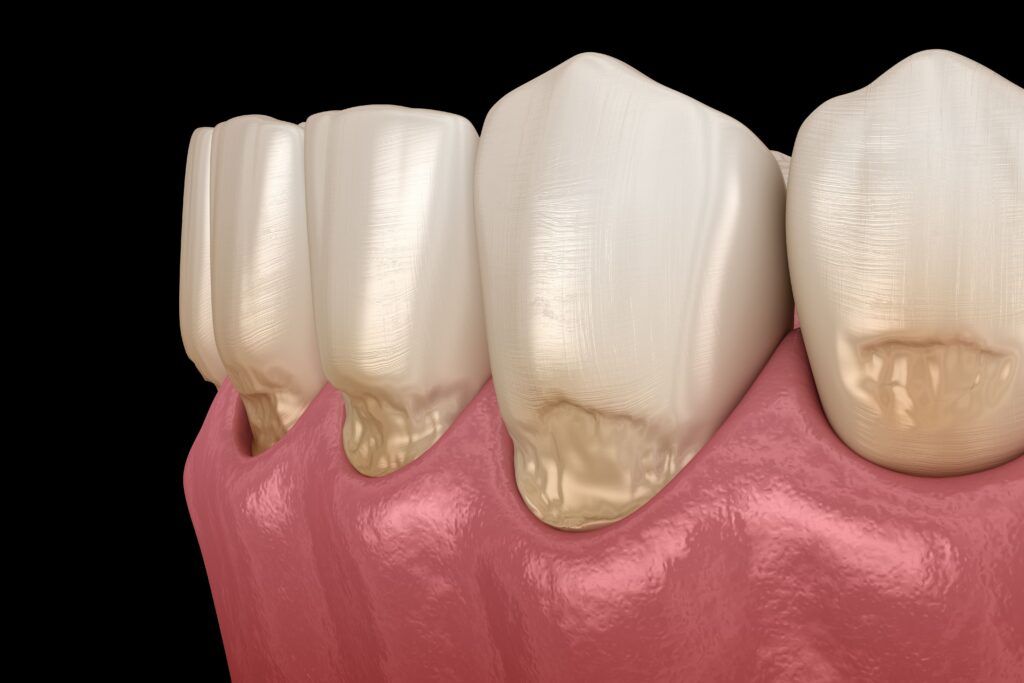
It is important to address these dental problems early on to prevent them from causing further damage to teeth and gums. Regular dental check-ups and proper oral hygiene practices can help prevent and treat these common dental problems associated with aging.
Aging can cause dental problems in several ways:
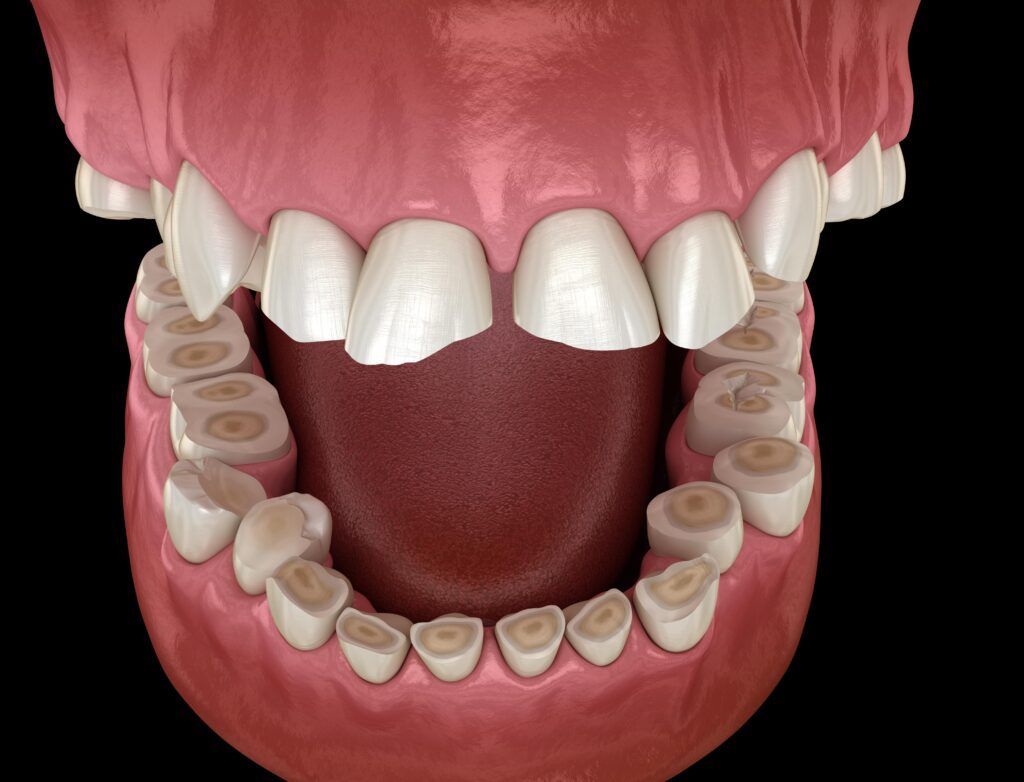
As individuals age, dental problems become more prevalent and can have a significant impact on overall health and well-being. However, there are several proactive steps that older adults can take to prevent and treat dental issues. The first step in preventing dental problems is to practice good oral hygiene habits, including brushing teeth twice a day with fluoride toothpaste, flossing daily, and using an antiseptic mouthwash. Regular dental checkups and cleanings are also important to detect any dental issues early and prevent them from progressing into more serious problems.
Eating a healthy and balanced diet is another important factor in maintaining good dental health. A diet that is rich in fruits, vegetables, whole grains, and lean protein can provide essential nutrients that help keep teeth and gums healthy. It’s also important to limit sugary and acidic foods and drinks, which can contribute to tooth decay and erosion.
Avoiding harmful habits such as smoking and excessive alcohol consumption can also help prevent dental problems. These habits have been linked to an increased risk of gum disease, tooth decay, and oral cancer.
Certain medical conditions, such as diabetes and cancer, can impact dental health. It’s essential to work with dental professionals and medical providers to manage any medical conditions and medications to minimize the impact on oral health.
Prompt treatment of dental problems is crucial to prevent them from worsening. Treatment may include fillings, crowns, root canals, or tooth extraction, depending on the severity of the issue. If tooth loss occurs, dentures or implants may be considered to restore the appearance and function of the teeth.
In conclusion, aging can have a significant impact on dental health, with various age-related factors contributing to an increased risk of dental problems. Wear and tear, gum recession, dry mouth, poor nutrition, and medical conditions can all affect dental health and lead to a range of issues, including tooth decay, gum disease, and tooth loss. However, by taking proactive steps to prevent dental problems and seeking prompt treatment when issues arise, older adults can maintain good oral health and overall well-being. It’s essential to work with dental professionals and medical providers to manage any medical conditions and medications to minimize the impact on oral health. By staying on top of dental health, older adults can enjoy a healthy, happy smile for years to come.

Dr. Sadati possesses extensive experience in all aspects of advanced restorative dentistry, with an emphasis in cosmetic and implant dentistry. He has attained Accredited Fellow status in the American Academy of Cosmetic Dentistry (AACD), the most rigorous, demanding credentialing process in the world. He is the only AACD Accredited Fellow in South Florida.
For individuals who are unhappy with the shape or size of their teeth, enameloplasty may be a viable solution. This cosmetic dental treatment involves removing small amounts of enamel from the surface of teeth to achieve a more desirable shape and size. enameloplasty can be used to correct a variety of imperfections, including uneven teeth, overlapping teeth, and pointy teeth. It is a quick and painless procedure that can be completed in just one office visit, making it an ideal option for individuals with busy schedules. With its ability to create a more balanced and harmonious smile, enameloplasty has become an increasingly popular cosmetic dental treatment in recent years.
Enameloplasty, also known as tooth reshaping or contouring, is a cosmetic dental procedure that involves removing small amounts of enamel from the surface of teeth to improve their appearance. Enamel is the hard, outer layer of the tooth that protects the underlying dentin and pulp. Enameloplasty is typically used to reshape teeth that are misshapen, chipped, or slightly overlapping. During the procedure, a dental professional will use a dental drill or laser to remove small amounts of enamel, sculpting the tooth into a more desirable shape. The procedure is relatively quick and painless and can often be completed in a single office visit. Enameloplasty is a conservative and non-invasive procedure, as only a small amount of enamel is removed. However, it should be noted that this procedure is not appropriate for all dental conditions, and a dental professional should evaluate a patient’s individual situation to determine if enameloplasty is a suitable treatment option.
An ideal candidate for enameloplasty is someone who has small cosmetic imperfections in their teeth, such as slightly overlapping teeth, small chips or irregularities, or teeth that are slightly too long or pointed. Candidates should have good oral health and sufficient tooth enamel to allow for the removal of a small amount of enamel without affecting the overall strength and function of the teeth.
On the other hand, individuals who have larger dental issues or more severe cosmetic imperfections, such as deeply chipped, cracked or misshapen teeth, may not be suitable candidates for enameloplasty. Additionally, individuals with dental conditions such as tooth decay, gum disease, or weakened tooth enamel due to acid erosion or teeth grinding may not be candidates for this procedure. In such cases, other restorative or cosmetic dental treatments may be more appropriate to address the patient’s dental concerns.
It is important for individuals who are considering enameloplasty to consult with a qualified dental professional who can evaluate their individual dental health and determine if they are a suitable candidate for the procedure.
When evaluating a patient for enameloplasty, a dentist will typically perform a comprehensive dental exam to assess the overall health and condition of the patient’s teeth and gums. During the exam, the dentist will evaluate the size and location of the cosmetic imperfections in the patient’s teeth, as well as the overall shape and alignment of the teeth.
To determine if a patient is an ideal candidate for enameloplasty, the dentist will consider a variety of factors, including:
Based on these factors, the dentist will determine if enameloplasty is an appropriate treatment option for the patient’s specific dental needs and goals. If enameloplasty is not a suitable treatment option, the dentist may recommend alternative cosmetic or restorative dental procedures to address the patient’s concerns.
The steps of an enameloplasty procedure can vary depending on the specific needs and goals of the patient. However, the general steps are as follows:
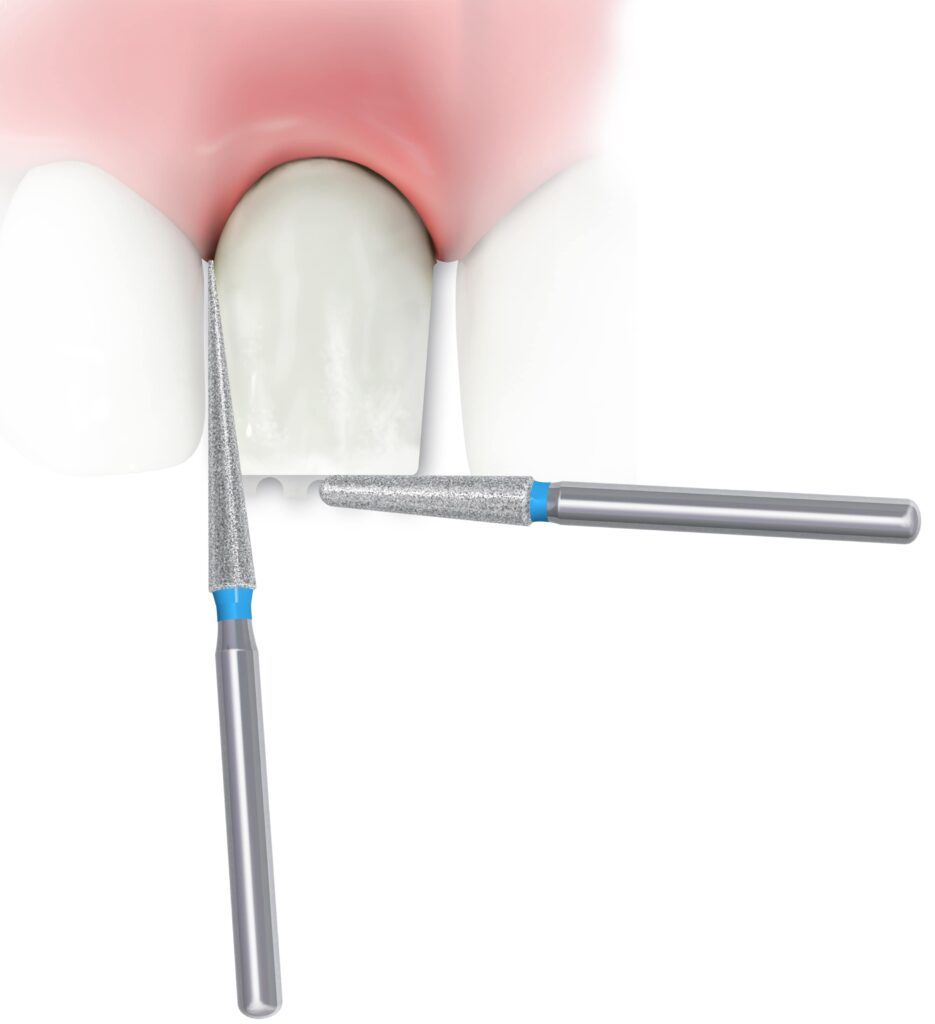
During the enameloplasty procedure, patients can expect to feel little to no discomfort, as the procedure is typically performed using a local anesthetic to numb the area. After the procedure, patients may experience some sensitivity to hot and cold temperatures, but this should subside within a few days. It is important for patients to follow the dentist’s aftercare instructions, including maintaining good oral hygiene and avoiding hard or crunchy foods for a few days following the procedure. The results of enameloplasty are permanent since enamel does not grow back once it has been removed.
Enameloplasty is a simple yet effective cosmetic dental procedure that can help patients achieve a more beautiful and balanced smile. With minimal discomfort and downtime, patients can see the results of enameloplasty immediately and enjoy a more confident smile for years to come. However, it is important for patients to work with a qualified dental professional to determine if they are a suitable candidate for the procedure and to ensure that the treatment is performed safely and effectively. By carefully considering all options and working with a trusted dental provider, patients can achieve the smile they have always wanted with enameloplasty.

Dr. Sadati possesses extensive experience in all aspects of advanced restorative dentistry, with an emphasis in cosmetic and implant dentistry. He has attained Accredited Fellow status in the American Academy of Cosmetic Dentistry (AACD), the most rigorous, demanding credentialing process in the world. He is the only AACD Accredited Fellow in South Florida.
Teeth whitening treatments are a popular way to enhance the appearance of your smile. However, one of the side effects of these treatments can be tooth sensitivity. If you have recently undergone a teeth whitening treatment and are experiencing sensitivity, there are several steps you can take to prevent and treat it. In this article, we will discuss the causes of tooth sensitivity after teeth whitening treatments and provide tips for preventing and treating it.
Teeth whitening treatments work by using a bleaching agent, typically hydrogen peroxide or carbamide peroxide, to remove stains and discoloration from the surface of the teeth. When the bleaching agent comes into contact with the teeth, it penetrates the enamel and breaks down the chemical bonds that cause stains.
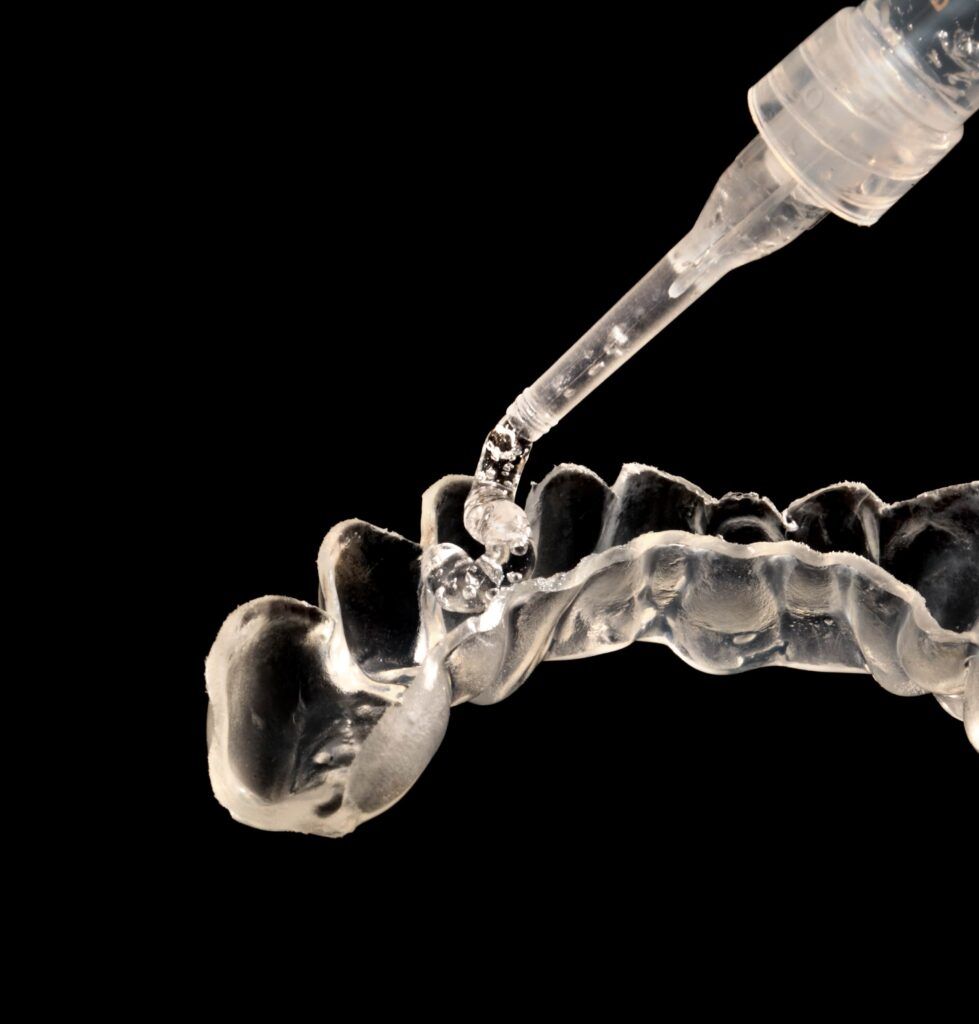
While teeth whitening treatments can be very effective, they can also contribute to tooth sensitivity. This is because the bleaching agent can penetrate the enamel and reach the underlying dentin layer, which contains microscopic tubules that lead to the nerves in the tooth. When the tubules are exposed, hot, cold, sweet, or acidic foods and drinks can trigger a pain response in the nerve, causing sensitivity.
In addition, teeth whitening treatments can also cause dehydration of the teeth, which can further contribute to sensitivity. This is because dehydration can cause the enamel to become thinner and more prone to wear and tear.
It’s important to note that while tooth sensitivity after teeth whitening treatments is common, it is usually temporary and should resolve on its own within a few days or weeks. However, if your sensitivity persists or is severe, it’s important to consult with your dentist to rule out any underlying dental problems or to explore treatment options.
While not all cases of sensitivity can be prevented, there are several steps you can take to minimize the risk of tooth sensitivity after a teeth whitening treatment, including:
Desensitizing toothpaste can be effective in preventing and treating tooth sensitivity after a teeth whitening treatment. These toothpastes contain ingredients like potassium nitrate, fluoride, or strontium chloride, which can help reduce sensitivity by blocking the pain signals from the nerves in the teeth.
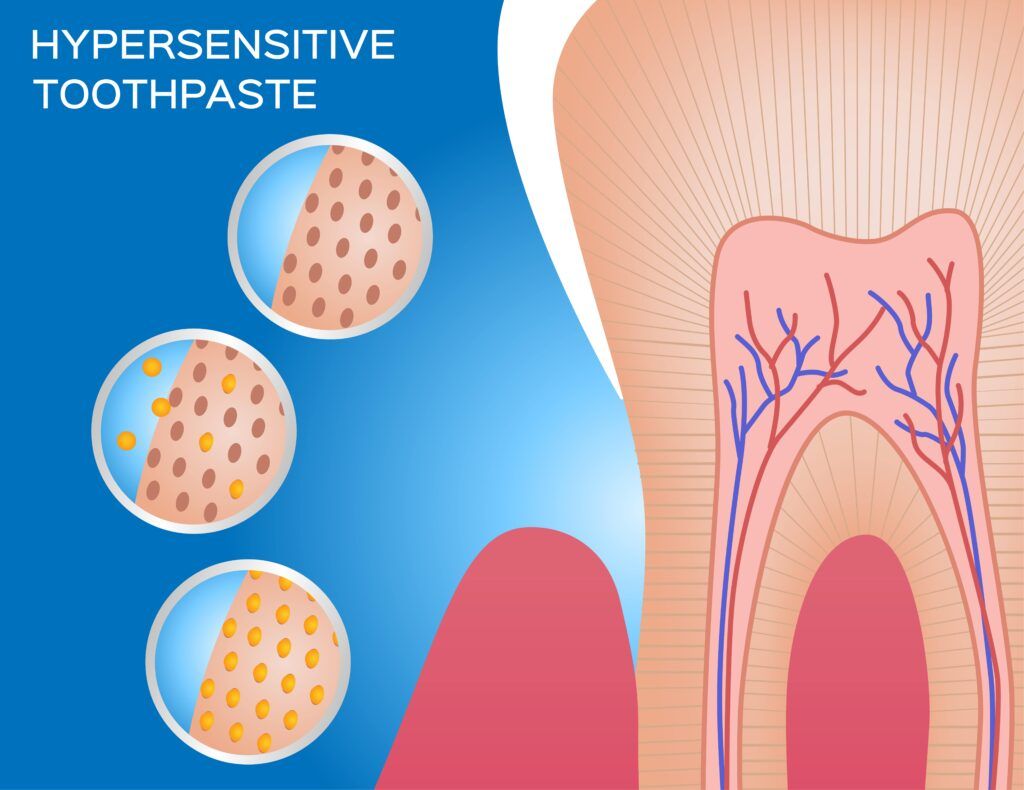
Using desensitizing toothpaste before and after a teeth whitening treatment can help prepare your teeth and reduce the risk of sensitivity. These toothpastes work by creating a protective barrier over the exposed dentin and nerve endings, reducing the amount of stimulation they receive from hot, cold, sweet, or acidic substances.
If you experience sensitivity after a teeth whitening treatment, using desensitizing toothpaste can help provide relief. Continued use of desensitizing toothpaste can also help treat sensitivity over time by strengthening the enamel and reducing the size of the exposed dentin tubules.
However, it’s important to note that desensitizing toothpaste may not be effective for everyone, especially in cases of severe sensitivity. If your sensitivity persists or becomes severe, it’s important to discuss it with your dentist, who can recommend the best treatment options based on your individual needs and dental health.
In-office teeth whitening treatments can help reduce the risk of tooth sensitivity compared to at-home whitening kits. This is because dentists use specialized tools and techniques to apply the whitening agent and protect the teeth during the treatment.
During an in-office whitening treatment, your dentist will use a professional-grade whitening agent with a higher concentration of hydrogen peroxide or carbamide peroxide compared to at-home kits. However, your dentist will also take measures to protect your teeth and gums from the whitening agent, such as using a barrier gel or a dental dam.
In addition, your dentist will monitor the treatment closely to ensure that it doesn’t over-bleach the teeth or cause damage to the enamel. This can help prevent sensitivity caused by overexposure to the whitening agent.
Furthermore, in-office whitening treatments can be customized to your individual needs and dental health. Your dentist can adjust the concentration and duration of the treatment based on the level of sensitivity you experience, and can also recommend desensitizing treatments or products to use before or after the whitening procedure.
Overall, in-office whitening treatments can provide a safer and more effective way to whiten your teeth while minimizing the risk of sensitivity compared to at-home whitening kits. However, it’s important to discuss any concerns or issues with your dentist, who can recommend the best treatment options based on your individual needs and dental health.
Avoiding acidic foods and drinks can help reduce the risk of sensitivity after a teeth whitening treatment because acidic foods and drinks can erode the enamel and expose the dentin layer, which can increase sensitivity to hot, cold, and sweet foods.
To reduce the risk of sensitivity, it’s recommended to avoid acidic foods and drinks for at least 48 hours before and after a teeth whitening treatment. This includes foods and drinks like citrus fruits, tomato-based sauces, vinegars, and carbonated drinks.
Fluoride is a mineral that helps strengthen the enamel of the teeth and protect them against decay and sensitivity. Fluoride treatment can help reduce sensitivity by remineralizing the enamel and filling in microscopic pores, which can help block the sensations that cause sensitivity.
Your dentist may recommend a fluoride treatment after teeth whitening to help reduce sensitivity and protect your teeth against future damage. Fluoride treatments can be applied as a gel, foam, or varnish, and are typically left on the teeth for several minutes to allow the fluoride to penetrate the enamel.
Tooth sensitivity can be an unfortunate side effect of teeth whitening treatments. However, by taking the right precautions and following a few simple steps, you can prevent and treat sensitivity effectively. Avoiding acidic foods and drinks, using desensitizing toothpaste, and trying a fluoride treatment are just a few ways to prevent sensitivity after teeth whitening. With the right approach, you can enjoy a brighter, more beautiful smile without sacrificing your dental health and comfort. For more information, schedule a consultation with Dr. Sadati today.

Dr. Sadati possesses extensive experience in all aspects of advanced restorative dentistry, with an emphasis in cosmetic and implant dentistry. He has attained Accredited Fellow status in the American Academy of Cosmetic Dentistry (AACD), the most rigorous, demanding credentialing process in the world. He is the only AACD Accredited Fellow in South Florida.
Artificial intelligence (AI) is a rapidly advancing technology that has become increasingly important in many fields, including dentistry. While it may seem like something straight out of a science fiction novel, AI is becoming more of an everyday occurrence. In this blog, we will explore what AI is, how it is currently used in dentistry, and what the future looks like for dental AI.
Artificial intelligence (AI) refers to the ability of computer systems to perform tasks that would normally require human intelligence to complete. This can include tasks such as learning, problem-solving, decision-making, and even perception. AI systems are designed to analyze and interpret data, recognize patterns, and make predictions or decisions based on that data. AI technology can be categorized into two main types: narrow or weak AI, which is designed to perform a specific task or set of tasks, and general or strong AI, which is designed to perform any intellectual task that a human can do. AI has a wide range of applications across many industries, including healthcare, finance, transportation, and more. In dentistry, AI is being used for a variety of purposes, including image analysis, treatment planning, and patient communication, among others.
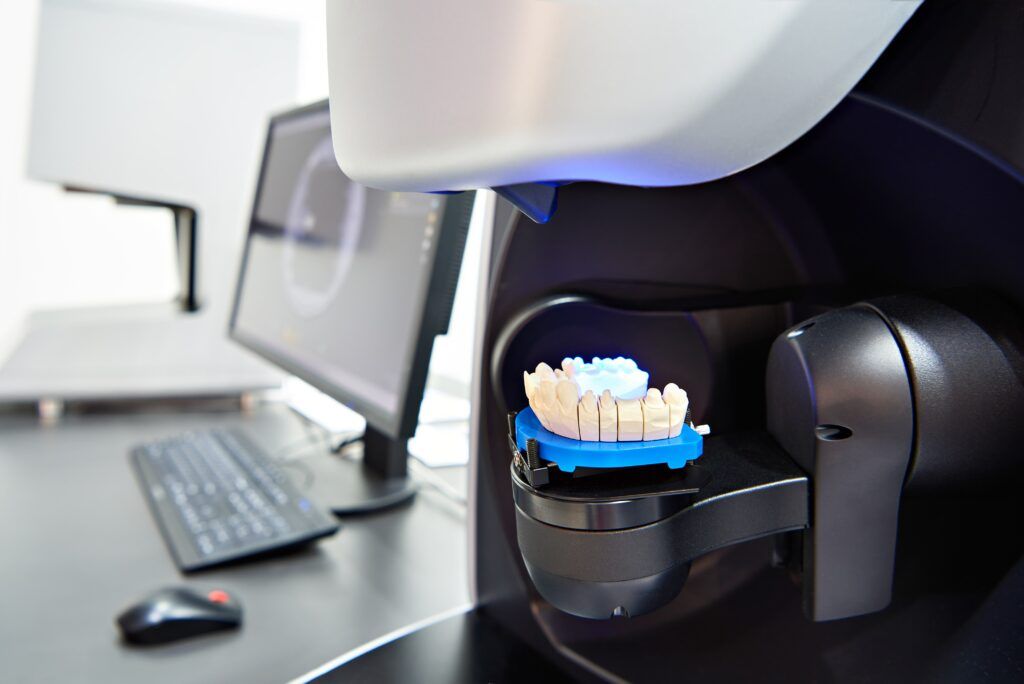
AI in dentistry is currently being used for a variety of purposes. Image analysis and diagnosis is one area where AI is being utilized. This involves using algorithms to analyze radiographs, 3D imaging, and intraoral images to detect dental diseases and conditions. AI is also being used for treatment planning and prediction, providing dentists with valuable insights into the most effective treatment options for individual patients. Personalized treatment plans are also being developed using AI algorithms to tailor treatments to each patient’s specific needs. Additionally, dental robotics are being used to improve efficiency and precision during procedures, while patient communication is being enhanced through the use of AI-powered chatbots and voice assistants.
There are several advantages to using artificial intelligence (AI) for dental applications, including:

Overall, AI has the potential to revolutionize dentistry by improving accuracy, efficiency, and patient outcomes, while also reducing costs and increasing access to care. As AI technology continues to advance, it is likely that we will see even more benefits in the years to come.
The future of AI in dentistry is very promising. Improved diagnostic accuracy, predictive analytics, and personalized treatment planning are all expected to become even more advanced, allowing for earlier intervention and more effective treatments. Dental robotics are also predicted to become more sophisticated, capable of performing even more complex procedures with greater accuracy and efficiency. Augmented reality is also expected to be used more frequently, allowing dentists to visualize and plan treatments in 3D, improving precision and accuracy during procedures. Furthermore, digital impression scanning technology is predicted to become more advanced, allowing for more accurate and efficient impressions of patients’ teeth, reducing the need for uncomfortable and time-consuming traditional impression techniques.
In conclusion, AI is an important technology that is already making a significant impact in dentistry. Its use is improving accuracy and efficiency in diagnosis and treatment, leading to better patient outcomes and satisfaction. The future of AI in dentistry is very promising, with improved diagnostic accuracy, predictive analytics, and personalized treatment planning all expected to become even more advanced. By embracing AI technology, dental practices can provide more effective and efficient care, ultimately leading to better oral health for patients.

Dr. Sadati possesses extensive experience in all aspects of advanced restorative dentistry, with an emphasis in cosmetic and implant dentistry. He has attained Accredited Fellow status in the American Academy of Cosmetic Dentistry (AACD), the most rigorous, demanding credentialing process in the world. He is the only AACD Accredited Fellow in South Florida.
Have you ever wondered why humans have two sets of teeth? Or just how bacteria can cause tooth decay? The mouth is an incredibly complex and fascinating part of the body, but many people don’t take the time to learn even its most basic features. We’ve all heard that brushing our teeth twice a day and flossing regularly will keep our mouths healthy – but did you know there are several other steps that should be taken to ensure optimum oral health? This blog post takes a deep dive into some things you didn’t know about your mouth – read on for tips on keeping your pearly whites bright!
Did you know that bacteria can cause tooth decay? It is estimated that there are over 700 different species of bacteria in the human mouth. Bacteria found in your mouth creates acids when it comes in contact with sugary food and drinks. These acids weaken the enamel on your teeth, allowing holes and cavities to form. That’s why it’s important to brush and floss regularly, as this reduces the number of bacteria in your mouth to help prevent decay. Eating a healthy diet is also a great way to maintain oral hygiene, as eating more fruits and vegetables can produce saliva which helps protect teeth from acid damage caused by bacteria. Overall, taking steps towards maintaining good oral hygiene habits are essential for preventing potential tooth decay caused by bacteria.
Tooth enamel, the outermost protective layer of our teeth, is a pretty amazing thing. It’s actually the hardest substance in our body and even harder than bones! This is because tooth enamel is composed of a mineral known as hydroxyapatite, which is five times harder than the calcium found in our bones. This hard outer layer protects our teeth from everyday wear and tear by providing a shield against hot and cold items, like ice cream or coffee. However, this protective covering can be easily damaged by acidic foods and drinks, so it’s important to avoid these when possible. Additionally, damage to tooth enamel can happen more easily than damage to bones due to its much thinner composition. Fortunately, regular visits to your dentist and using a good quality fluoride toothpaste are easy ways we can keep our tooth enamel strong and healthy in the long run.

Teeth are a remarkably unique feature of the human body. Just like fingerprints, no two people have identical teeth. In fact, almost every tooth in someone’s mouth has a completely different shape and size than any other person’s. This uniqueness has been put to good use by criminal investigators for years now, using dental records to identify individuals among crime scenes and victims. However, this technology works best when considering two strangers — dentists can often tell their own patients apart from an unusual pattern or chip just by looking at their mouths! Whether you think it’s cool or creepy, the fact remains that our teeth may be one of the only truly irreplaceable features we possess.
Oral health and overall health go hand-in-hand, so it’s important to take care of your teeth and gums as well as the rest of your body. Research has shown that there is a definite link between gum disease and other diseases such as heart disease, stroke, and even some forms of cancer. Poor oral hygiene can lead to an increase in certain bacteria that can travel through the bloodstream, causing harm to other parts of the body. On the flip side, healthy oral habits have been linked with positive effects on overall health and general wellbeing. So make sure to brush twice daily and floss once a day – you’ll be doing your whole body a favor!
It may come as a surprise to some that the average human produces a full liter of saliva each and every day. That’s a lot of spit! Saliva is produced mainly by our salivary glands, located near our cheeks and lower jaw. This production of saliva is one of the main factors in keeping our mouths clear and hydrated. In fact, saliva helps to wash away bacteria and food debris, all while regulating the pH level in the mouth.

An interesting fact about the gums is that they are one of the most sensitive and vascularized tissues in the human body. The gums contain a large network of blood vessels, nerves, and other specialized cells that play a crucial role in maintaining the health and integrity of the teeth and surrounding tissues. In fact, the gums are so sensitive that even minor irritants or injuries, such as brushing too hard or eating hot or spicy foods, can cause discomfort or pain. Additionally, the gums can also be a key indicator of overall health, as conditions such as diabetes, heart disease, and other systemic illnesses can all have an impact on the health and appearance of the gums. Understanding the unique properties of the gums and how they interact with the rest of the body is an important part of maintaining good oral health and overall wellness.
In conclusion, it is remarkable how much there is to know about human teeth. We have two sets of teeth in order to maintain optimal oral health by replacing worn down teeth with new ones. Not only that, but our tooth enamel, the toughest part of our body and made up of calcium phosphate, works hard to protect our teeth from the bacteria that causes decay. It’s also unique because like fingerprints, no two sets of teeth are alike. Furthermore, oral health has a much wider reach than many think – it can be connected directly to overall health and wellness. And finally, did you know that as humans we produce one liter of saliva daily? Everyone should take steps toward ensuring they have good oral hygiene and optimum oral health, if not for its own sake then for their overall wellbeing.

Dr. Sadati possesses extensive experience in all aspects of advanced restorative dentistry, with an emphasis in cosmetic and implant dentistry. He has attained Accredited Fellow status in the American Academy of Cosmetic Dentistry (AACD), the most rigorous, demanding credentialing process in the world. He is the only AACD Accredited Fellow in South Florida.
If you have ever considered improving the look of your smile with cosmetic dentistry, then you know that it can be a difficult choice to decide which treatment is best for you. You may find yourself wondering what types of treatments are available and how they differ from one another. In this blog, we will be breaking down the most popular cosmetic dental treatments and offering up tips on how to determine which option might be right for you.
Cosmetic dentistry has come a long way since its early days, and there are now a variety of treatments available to help people enhance the look of their smiles. Cosmetic dentistry is a specialized field of dentistry that focuses on improving the appearance of a person’s teeth, gums, and smile. It includes a range of dental treatments and procedures that can address issues such as discoloration, chips, gaps, misalignment, and missing teeth. Some of the most common cosmetic dental treatments include teeth whitening, dental veneers, dental bonding, dental implants, and Invisalign.

There are many reasons why someone might consider cosmetic dental treatment. First and foremost, a healthy and attractive smile can have a significant impact on a person’s confidence and self-esteem. People who are unhappy with the appearance of their teeth may avoid smiling or feel self-conscious in social situations. Cosmetic dental treatments can help improve the appearance of the teeth and enhance a person’s overall sense of well-being.
In addition to the emotional benefits, cosmetic dental treatments can also have practical advantages. For example, dental implants can improve a patient’s ability to chew and speak, while Invisalign can help correct bite issues and prevent future dental problems. Cosmetic dental treatments can also help maintain the health of the teeth and gums by addressing issues such as decay or misalignment. Overall, cosmetic dentistry can provide a range of benefits for patients, both in terms of appearance and function.
Exploring your options for cosmetic dental treatments can seem overwhelming, but knowing which one is right for you doesn’t have to be intimidating. Here is a brief overview of some of the most popular cosmetic dental treatments:
| Treatment | Procedure | Longevity | Pros | Cons |
| Teeth Whitening | In-office or at-home | 6-12 months | Affordable, non-invasive, improves overall appearance of teeth | May cause sensitivity, not suitable for all types of discoloration, results may not be as dramatic as other treatments |
| Dental Veneers | Porcelain shells | 10-15 years | Natural-looking, long-lasting, covers a variety of imperfections | Irreversible, expensive, may require removal of some tooth structure, may not be suitable for patients with severe tooth damage |
| Dental Bonding | Composite resin | 5-10 years | Affordable, quick, improves overall appearance of teeth, preserves natural tooth structure | May not be as long-lasting as other treatments, may need touch-ups or replacements over time, may not be suitable for all types of tooth damage or discoloration |
| Dental Implants | Titanium posts | 20-25 years | Long-lasting, natural-looking, improves overall function and appearance of teeth, preserves jawbone health | Expensive, requires surgery, may not be suitable for all patients or types of tooth loss, may require additional treatments or procedures |
| Invisalign | Clear, removable aligners | Usually Permanent | Discreet, convenient, can be removed for eating and oral hygiene, improves overall appearance and function of teeth | May not be as effective as traditional braces in some cases, requires strict compliance with wearing the aligners for the recommended amount of time |
Teeth whitening is a cosmetic dental treatment that involves removing stains and discoloration from the teeth to improve their appearance. It is a popular choice for people who are unhappy with the color of their teeth due to factors such as aging, smoking, or consuming certain foods and beverages. Teeth whitening can be done using various methods, including in-office treatments, take-home kits, and over-the-counter products.
In-office treatments typically involve applying a strong bleaching agent to the teeth under the supervision of a dental professional. Take-home kits involve custom-fitted trays and a less concentrated bleaching agent that the patient uses at home over a period of several weeks. Over-the-counter products, such as whitening toothpaste and strips, are also available but may not be as effective as professional treatments.
The length of time that teeth whitening lasts can vary depending on factors such as the patient’s lifestyle and oral hygiene habits. With proper care, teeth whitening can last for several months to a year or more. Some of the pros of teeth whitening include improved appearance and increased confidence, while some cons include sensitivity or discomfort during the treatment and the potential for uneven results or damage to the teeth if not done correctly.
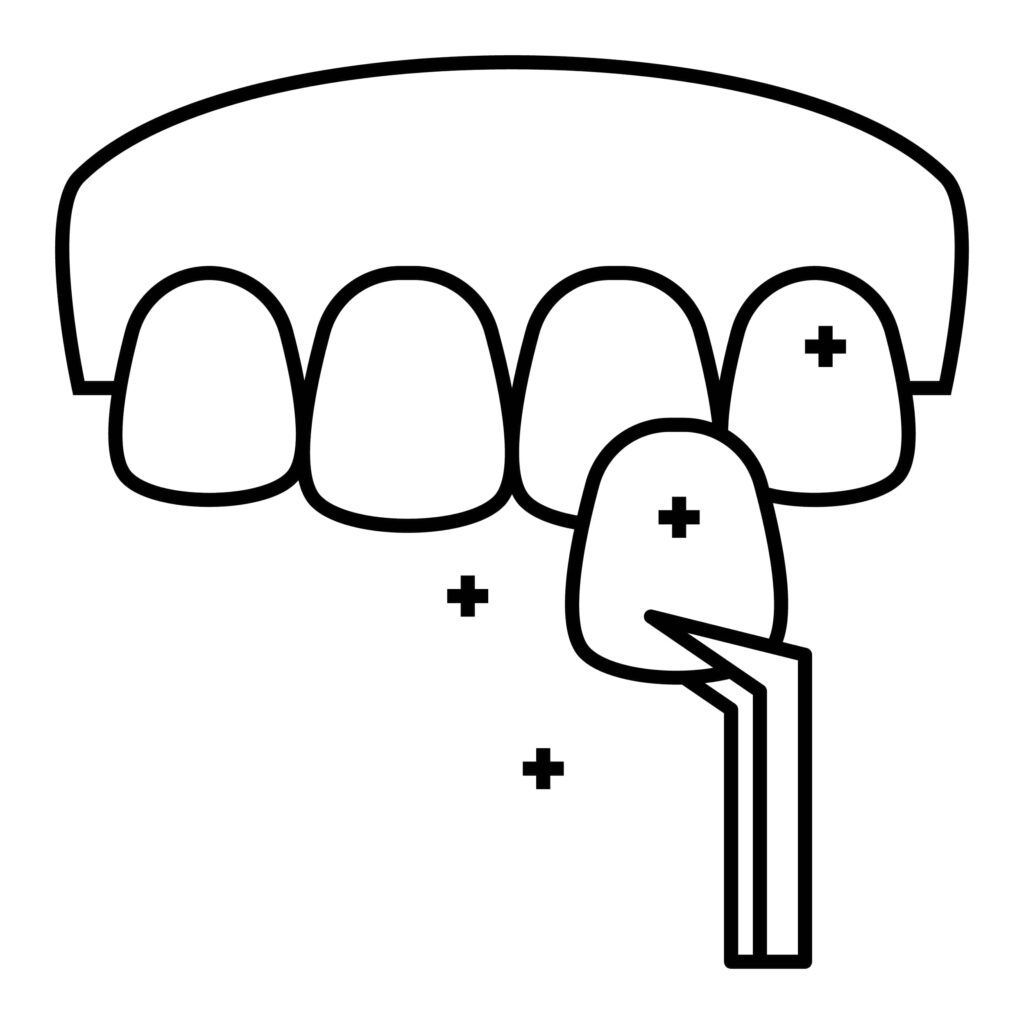
Dental veneers are thin, custom-made shells that are placed over the front surface of teeth to improve their appearance. They are typically made from porcelain or resin and can be used to cover teeth that are discolored, misshapen, chipped, or have gaps between them. Veneers are a common cosmetic dental treatment because they can dramatically improve the appearance of a patient’s smile in just a few appointments.
The procedure for placing veneers typically involves removing a small amount of the tooth’s enamel to make room for the veneer, taking an impression of the tooth, and then bonding the veneer to the tooth using a special adhesive. With proper care and maintenance, dental veneers can last for several years, but they may need to be replaced over time due to wear and tear or damage.
Some of the pros of dental veneers include improved appearance and function of damaged or discolored teeth, while some cons include the need for tooth preparation and the potential for sensitivity or discomfort after the procedure. It is also important to note that veneers are not a reversible procedure, as the tooth’s enamel must be permanently removed to make room for the veneer.
Dental bonding is a cosmetic dental procedure that uses a tooth-colored composite resin material to repair or improve the appearance of damaged or discolored teeth. The procedure involves applying the resin material to the tooth, shaping it to match the natural tooth, and then hardening it with a special light. Dental bonding is often used in cosmetic dentistry to improve the appearance of teeth that are chipped, cracked, stained, or have gaps between them.
It is a relatively quick and affordable procedure that can be completed in a single appointment. Dental bonding can last for several years with proper care and maintenance, but may need to be touched up or replaced over time due to wear and tear. Some of the pros of dental bonding include improved appearance and function of damaged or discolored teeth, while some cons include the potential for staining or discoloration over time and the need for touch-ups or replacements. It is important to note that dental bonding is not a suitable option for all types of tooth damage or discoloration, and may not be as long-lasting as other cosmetic dental treatments such as dental veneers or dental implants.
Dental implants are artificial tooth roots that are used to support a replacement tooth or bridge. They are typically made of titanium and are surgically placed into the jawbone to provide a stable base for the artificial tooth. Dental implants are a popular cosmetic dental treatment because they can help patients who have lost teeth due to injury, decay, or other factors to regain their confidence and improve their overall appearance.
The procedure for placing dental implants typically involves several appointments over a period of several months. During the first appointment, the implant is surgically placed into the jawbone, and a temporary tooth replacement is attached. After a period of healing, a permanent replacement tooth or bridge is attached to the implant. With proper care and maintenance, dental implants can last for many years, and they are often considered a long-term solution to missing teeth.
Some of the pros of dental implants include improved appearance and function of missing teeth, while some cons include the need for surgery and the potential for complications such as infection or implant failure. It is also important to note that dental implants can be a more costly procedure compared to other cosmetic dental treatments.
Invisalign is a popular cosmetic dental treatment that uses clear, removable aligners to gradually straighten teeth and correct misalignment issues. The aligners are custom-made for each patient and are worn for a specific period of time, typically 20-22 hours per day, before being replaced with the next set of aligners in the series. Invisalign is often used in cosmetic dentistry because it provides a discreet and convenient alternative to traditional metal braces.
The aligners are virtually invisible and can be removed for eating and oral hygiene, making it easier for patients to maintain their oral health during treatment. Invisalign treatment typically lasts for 12-18 months, depending on the severity of the misalignment issues. Some of the pros of Invisalign include improved appearance and function of misaligned teeth, while some cons include the need for strict compliance with wearing the aligners for the recommended amount of time and the potential for discomfort or soreness during treatment. It is important to note that Invisalign may not be suitable for all types of misalignment issues and may not be as effective or appropriate as traditional braces in some cases.
Now that you have a better understanding of the various treatment options available in cosmetic dentistry, it’s time to select the best one for your needs. Here are some tips:
1. Consult with a certified cosmetic dentist to determine what treatment options are available and suitable for you.
2. Research the treatments available, as well as their cost, before making a decision.
3. Consider your lifestyle and how the treatment will fit into it before making a selection.
4. Understand the risks associated with each type of treatment so that you can make an informed decision about which one is right for you.
5. Explore payment options in advance so that you know what to expect financially when considering cosmetic dental treatments.
6. Ask questions throughout the process and get all of your concerns addressed by your dentist or specialist prior to starting any procedure or taking any medication prescribed by them related to cosmetic dentistry treatments .
7. Make sure that you understand exactly how long each procedure may take from start to completion as this will help ensure realistic expectations of results over time following any chosen treatments.
8. Find out if there are any additional steps required such as follow-up care, maintenance or adjustments after completing a particular course of treatment before committing to it fully.
9. Look at multiple examples of successful cases completed according to each different type of treatment being considered in order to get an idea of expected results.
10. Talk to family, friends and colleagues about their experiences with cosmetic dentistry treatments so that you can get additional perspectives on what to expect when considering a specific type of treatment option.
By researching your options and taking the time to make an informed decision, you can select the best treatment for your needs and achieve the smile of your dreams!
Cosmetic dentistry can be a great way to enrich your life and sense of wellbeing. Taking the time to explore all your options and determine what is best for you can make all the difference. With the proper research, care and planning, there is a wealth of cosmetic dental treatments out there to choose from. Whether you opt for whitening, bonding, veneers or anything else, if you take care of it properly and as recommended by your dentist, you should be able to maintain a healthy smile that feels comfortable and looks great for many years. So don’t rush into any decision – take the time to weigh each treatment carefully before deciding on which one will fill all your requirements. In this way, you’ll feel confident in knowing that you have chosen the best cosmetic dental treatment that suits you individually!

Dr. Sadati possesses extensive experience in all aspects of advanced restorative dentistry, with an emphasis in cosmetic and implant dentistry. He has attained Accredited Fellow status in the American Academy of Cosmetic Dentistry (AACD), the most rigorous, demanding credentialing process in the world. He is the only AACD Accredited Fellow in South Florida.
Dental fillings are a common dental treatment used to restore teeth that have been damaged by decay or injury. They are designed to fill in the damaged area of the tooth and prevent further decay or damage from occurring. Cosmetic dentists often use different types of fillings to achieve the best aesthetic results for their patients. In this blog post, we will explore the different types of dental fillings used by cosmetic dentists, including composite fillings, ceramic fillings, gold fillings, and glass ionomer fillings. We will examine the advantages and disadvantages of each type of filling and discuss the procedure for placing them. By understanding the different options available, patients can make informed decisions about their dental care and work with their cosmetic dentist to determine the best type of filling for their individual needs.
Composite fillings are a popular choice for cosmetic dentistry due to their ability to closely match the color of the natural teeth. They are made of a mixture of plastic and glass and are applied in layers to build up the filling. Advantages of composite fillings include their aesthetic appearance, the ability to bond to the tooth, and the fact that they require less removal of healthy tooth structure. Disadvantages include their tendency to stain or discolor over time and their durability compared to other types of fillings. The procedure for placing composite fillings involves removing the decayed or damaged area of the tooth and applying the composite material in layers, which is then cured with a special light.
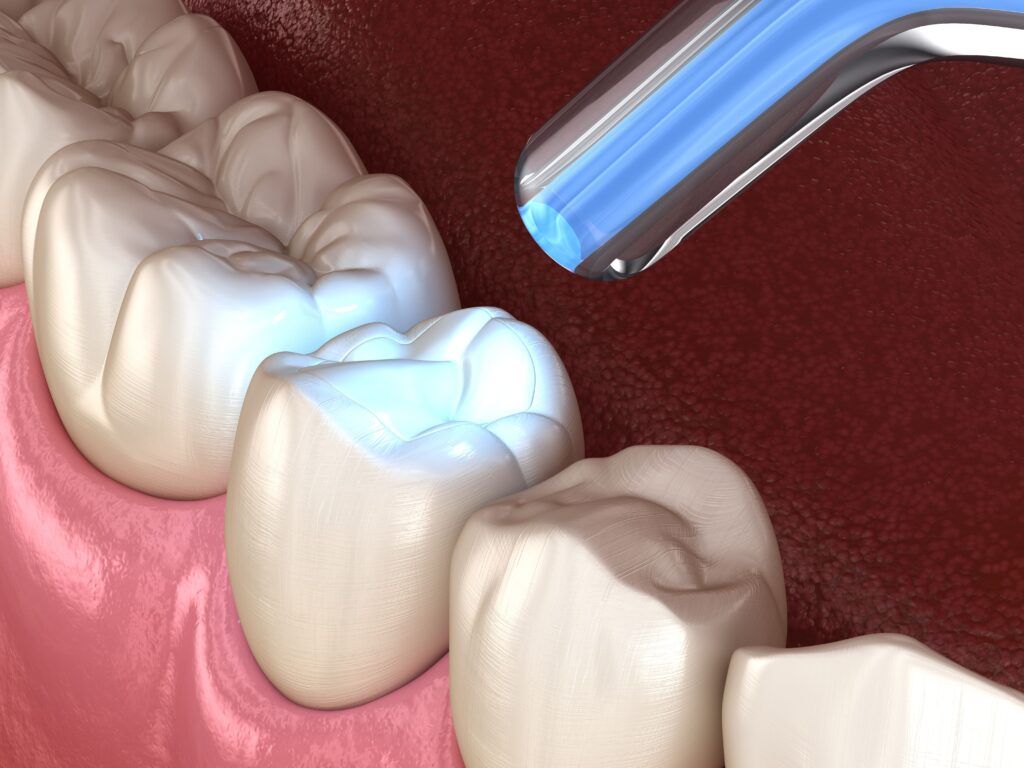
Ceramic fillings, also known as porcelain fillings, closely mimic the appearance of natural teeth due to their translucency and color-matching abilities. They are highly durable and resistant to wear, making them a popular choice for cosmetic dentistry. Advantages of ceramic fillings include their natural appearance, biocompatibility, and their long-lasting durability. Disadvantages include their high cost, the need for multiple visits to the dentist, and the fact that they require more healthy tooth structure to be removed during placement. The procedure for placing ceramic fillings involves removing the damaged or decayed area of the tooth and taking a mold of the tooth to create a custom ceramic filling. The filling is then bonded to the tooth using a special adhesive.
Glass ionomer fillings are a tooth-colored filling option that releases fluoride over time, helping to prevent further decay and strengthening the tooth. They are often used in areas of the mouth that are not subject to high chewing forces, such as in the front teeth or for small cavities. Advantages of glass ionomer fillings include their aesthetic appearance, their ability to release fluoride, and the fact that they require less healthy tooth structure to be removed during placement. Disadvantages include their lower durability compared to other types of fillings and their susceptibility to wear and tear over time. The procedure for placing glass ionomer fillings involves removing the damaged or decayed area of the tooth and applying the glass ionomer material, which is then cured with a special light.
In addition to the materials listed above, there are other types of materials that can also be used for fillings. However, cosmetic dentists tend to avoid using these materials because they do not have an aesthetic appearance. Additionally, metal fillings can cause discoloration due to corrosion.
Amalgam fillings have been used for many years and are known for their strength and durability. They are made of a mixture of metals, including silver, mercury, tin, and copper. The amalgam filling is easy to place, and it can withstand the forces of biting and chewing, making it suitable for use in the back teeth. However, they are less aesthetically pleasing than other filling options and can be noticeable when talking or laughing. Amalgam fillings may also expand or contract with temperature changes, which can cause the tooth to crack or break over time. Some people are concerned about the use of mercury in amalgam fillings, although the American Dental Association has stated that the amount of mercury used in the filling is safe.
Gold fillings, also known as inlays or onlays, are a long-lasting and durable option for restoring teeth. They are highly resistant to wear and corrosion and can last for many years or even decades. Advantages of gold fillings include their strength and durability, their biocompatibility, and their ability to be easily shaped and fitted to the tooth. Disadvantages include their cost, their color (which can be noticeable in the mouth), and the fact that they require more healthy tooth structure to be removed during placement. The procedure for placing gold fillings involves removing the damaged or decayed area of the tooth and creating a custom gold filling that is then cemented into place.
| Type of Filling | Material | Advantages | Disadvantages |
| Composite | Plastic and glass | Aesthetic appearance, bonding to tooth structure, minimal removal of healthy tooth structure | Susceptible to staining or discoloration, may not last as long as other types of fillings |
| Ceramic | Porcelain | Natural appearance, highly durable, resistant to wear | High cost, may require more removal of healthy tooth structure, may require multiple dental visits |
| Glass Ionomer | Acrylic and glass | Releases fluoride, minimal removal of healthy tooth structure, may be used to repair root decay | Less durable than other types of fillings, susceptible to wear and tear |
| Amalgam | Silver and mercury | Strong and durable, easy to place, can withstand forces of biting and chewing | Less aesthetically pleasing, may expand or contract with temperature changes, may contain mercury |
| Gold | Gold alloy | Strong and durable, biocompatible, easily shaped and fitted to the tooth | High cost, less aesthetically pleasing, may require more removal of healthy tooth structure |
In conclusion, there are many different types of dental filling materials available, each with its own advantages and disadvantages. It is important to discuss your options with a cosmetic dentist who can help you make an informed decision about which material is best for you. In general, ceramic and composite fillings provide the most natural-looking aesthetic appearance and durability, which is why they are primarily used by cosmetic dentists. Although amalgam and gold fillings have their own advantages, their appearance makes them less than ideal for use in cosmetic dentistry. Glass ionomer fillings are a good option for small cavities, as they help to release fluoride and require less healthy tooth structure to be removed during placement. Ultimately, the right filling material for you will depend on your budget, lifestyle, aesthetic goals, and individual dental needs.

Dr. Sadati possesses extensive experience in all aspects of advanced restorative dentistry, with an emphasis in cosmetic and implant dentistry. He has attained Accredited Fellow status in the American Academy of Cosmetic Dentistry (AACD), the most rigorous, demanding credentialing process in the world. He is the only AACD Accredited Fellow in South Florida.
If you are missing teeth, or have damaged, decayed, or old teeth that need to be replaced, dental implants may be the perfect solution for you! Dental implants are a permanent solution that look and feel like your own teeth. They are placed in the jawbone and can be used to replace one tooth or all of your teeth. In this blog post, we will answer the question: “How many dental implants do I need?” by discussing three factors that affect how many implants you need: the number of teeth being replaced, the type of restoration being used, and the amount of bone.
The number of teeth being replaced is the first factor that affects how many implants you need. If you are missing one tooth, one implant and one crown will be used to replace it. If you are missing multiple teeth, implants can be used to support a bridge or denture. In general, for every tooth that is being replaced with an implant, one implant is needed. However, this can change if you have multiple missing teeth that are next to one another.
The type of restoration you choose will also affect the number of implants needed. The three most common types of dental implant restorations are crowns, bridges, and dentures.
Crowns are typically used to replace one tooth. In this case, one implant is needed for every tooth being replaced with a crown. However, if you have multiple missing teeth that are far away from one another, then you may need to have more than one implant-supported crowns placed.
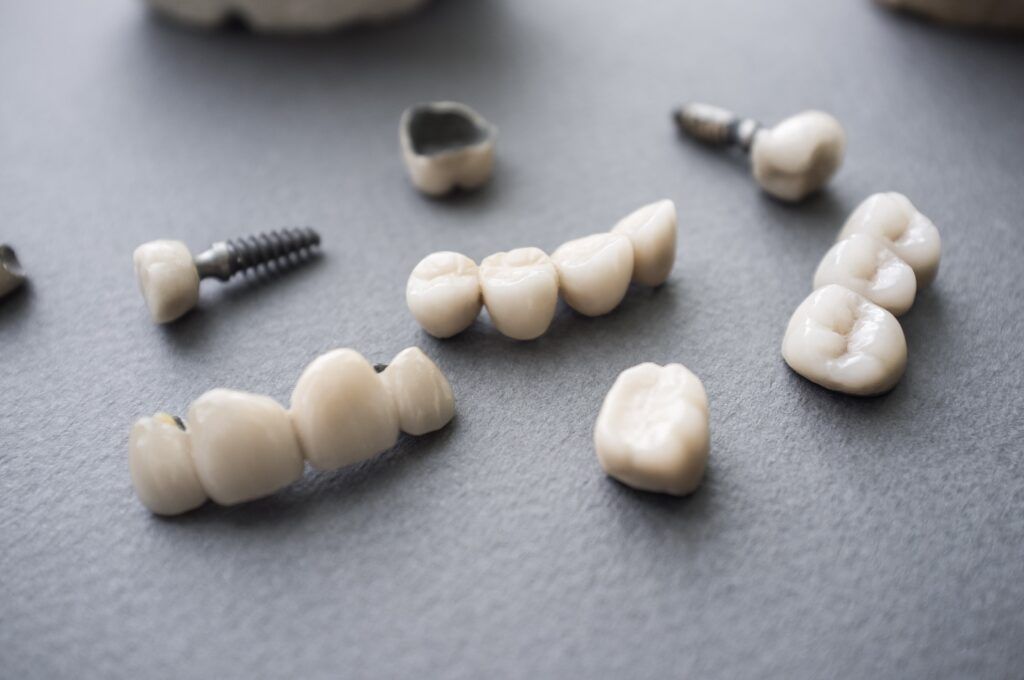
Bridges are typically used to replace multiple adjacent teeth. A bridge is made up of two parts: the false teeth (or pontics) that replace the missing teeth, and the abutments which are placed on each side of the pontics and attached to the implants. The number of abutments needed will depend on how many teeth are being replaced with bridges. In general, most bridges only require two dental implants. However, bridges that span longer distances may require a third implant to provide additional support.
Dentures are typically used to replace all of the teeth in the upper or lower arch. Dentures are made up of false teeth that are attached to a gum-colored base. The base is held in place by a number of implants placed around the perimeter of the denture. The total number of implants required to support an implant-supported denture can vary from four to six, to eight, to ten.
Here’s a table showing the typical number of dental implants needed to support different types of dental restorations:
| Dental Restoration | Number of Dental Implants |
| Single Crown | 1 |
| Bridge | 2-4 |
| Partial Denture | 2-4 |
| Full Denture | 4-6 |
It’s important to note that the number of dental implants needed may vary depending on your individual needs. Your dentist or oral surgeon will be able to provide more specific recommendations based on your unique situation.
The amount of bone you have in your jawbone is the third factor that affects how many implants you need. In order to place an implant, there must be enough bone to support it. In cases where there is an ample amount of healthy bone, less implants are usually needed. However, more implants may be needed in cases where less bone is present.
If there is not enough bone in the jaw, then additional bone augmentation procedures may be needed before the implant or implants can be placed.
Here’s a table showing some common bone augmentation procedures that may be used to prepare a patient’s jawbone for dental implant placement:
| Bone Augmentation Procedure | Description |
| Sinus Lift | A procedure to add bone to the upper jaw in the area of the molars and premolars, where the sinuses are located. This involves lifting the sinus membrane and placing bone graft material in the space created to support the implant. |
| Ridge Expansion | A procedure to widen or increase the height of the jawbone where it is too narrow or too short to support an implant. This involves making an incision in the gum and carefully expanding the ridge using special tools, then packing bone graft material into the space created. |
| Bone Grafting | A procedure to add bone to the jaw where it is deficient due to injury, disease, or previous tooth loss. This can involve taking bone from another part of the patient’s body (such as the hip or jaw) or using synthetic or donated bone material. |
It’s important to note that not all patients will require bone augmentation procedures before dental implant placement, and the specific procedure recommended will depend on your needs and the condition of your jawbone. Your dentist or oral surgeon will be able to provide more specific recommendations based on your unique situation.
In some cases, specialized implants like mini dental implants (MDIs) may also need to be used. Mini dental implants are smaller in diameter than traditional implants, typically less than 3mm in diameter. They are made of titanium, just like regular implants, but their smaller size makes them easier to place and more versatile. MDIs can be used to replace a single missing tooth, multiple missing teeth, or to stabilize dentures.
In this blog post, we have answered the question: “How many dental implants do I need?” by discussing three factors that affect how many implants you need: the number of teeth being replaced, the type of restoration being used, and the amount of bone. We hope that this information has been helpful to you in determining how many implants you will need. Ultimately, however, you will need to consult with an experienced implant dentist to get a personalized treatment plan.

Dr. Sadati possesses extensive experience in all aspects of advanced restorative dentistry, with an emphasis in cosmetic and implant dentistry. He has attained Accredited Fellow status in the American Academy of Cosmetic Dentistry (AACD), the most rigorous, demanding credentialing process in the world. He is the only AACD Accredited Fellow in South Florida.
Do you have sudden tooth pain or sensitivity that keeps getting worse? If so, you may be suffering from pulpitis. Pulpitis is a type of infection inside your tooth that requires immediate treatment. In this blog post, we will discuss pulpitis, as well as the top treatments for pulpitis. We will also compare the two most common treatments to help you decide which option may be best for you.
Pulpitis is a condition that affects the pulp of your teeth. The pulp is the soft tissue inside your teeth that contains blood vessels and nerves. When you have pulpitis, this tissue becomes inflamed. This can cause tooth pain and sensitivity to cold or hot foods and drinks. In some cases, it can also lead to root abscesses or tooth loss. Since pulpitis has the potential to cause severe problems, prompt treatment is recommended.
Treatments for pulpitis revolve around removing the infected tissue from the inside of the tooth. There are two main ways to do this: root canal therapy and dental implants.
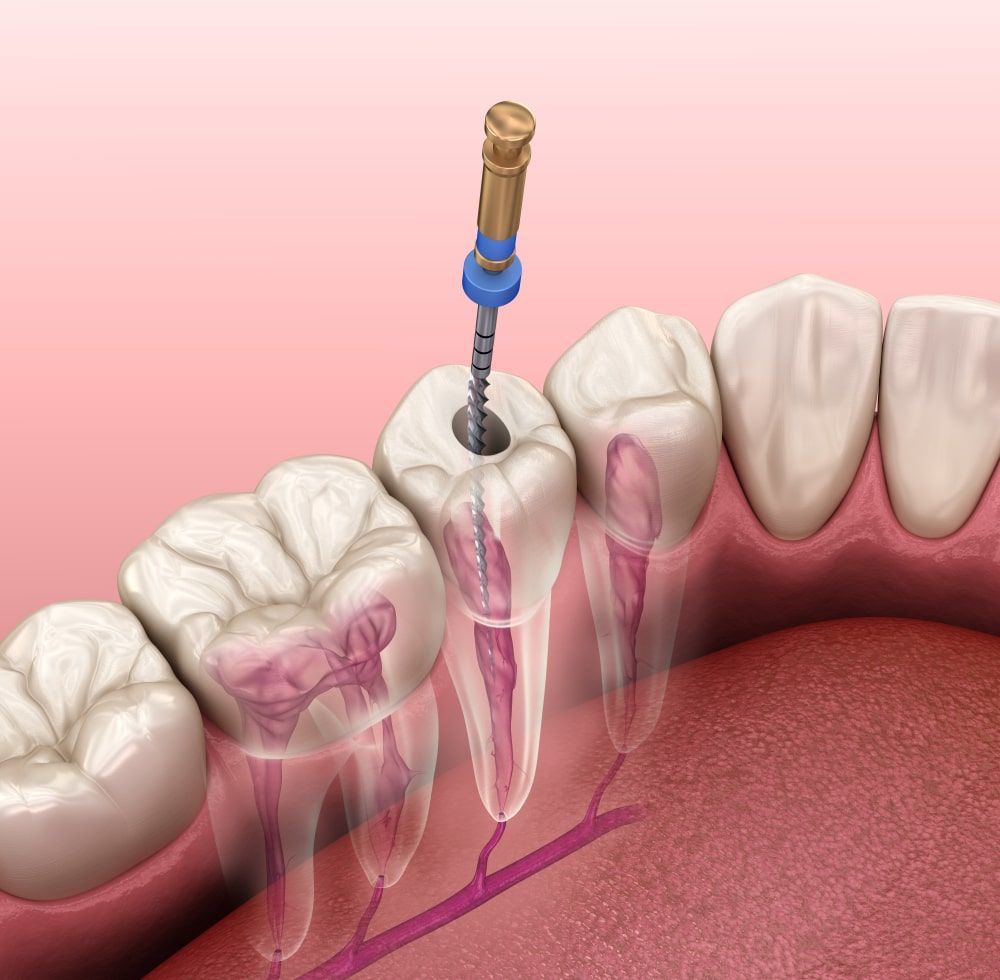
Root canal therapy is the most common treatment for pulpitis. During this procedure, the dentist will use a dental drill to access the inside of the tooth. They will then use a series of root canal files to remove the infected tissue from the pulp chamber and root canals. They will then clean and fill the inside of the tooth with a rubber-like material. In most cases, a dental crown will also be placed on the tooth to protect it from further damage.
Root canal therapy can be done in one or two visits, depending on the severity of the infection. The infection is usually removed during the first appointment, however a second appointment may be needed to place a permanent dental crown once the tooth has healed. It is generally a successful procedure, however there is a risk of failure.
Another treatment option for pulpitis is dental implants. Dental implants are titanium posts that are placed in the jawbone to act as artificial teeth roots. Once the implants are in place, a dental crown is placed on top of them. As you may have deduced, dental implants are used in cases where the infected tooth or teeth are extracted, or removed from the mouth.
Dental implants are considered a more permanent solution than root canal therapy since removing the entire tooth also guarantees the removal of the infection. However, they are also more expensive and invasive than a traditional root canal.
The best treatment option for you will depend on a number of factors. These include the severity of your infection and the number of teeth affected, just to name a few.
If you have a severe infection that has spread to multiple teeth, dental implants may be your best option. However, if you have a small infection in one tooth, root canal therapy may be all that you need.
Additionally, your dentist may recommend implants over a root canal in cases where the affected tooth does not have enough healthy structure to support a crown or when a root canal is likely to fail. Ultimately, however, you will need to discuss both options with your dentist to determine which is the better option for your situation.
Here is a table comparing root canal therapy and dental implants as possible treatments for pulpitis:
| Criteria | Root Canal Therapy | Dental Implants |
| Definition | A dental procedure that involves removing the infected or damaged pulp from the tooth and filling the root canal with a material to prevent further infection | A surgical procedure that involves replacing the entire tooth, including the root, with an artificial tooth |
| Procedure | The dentist will first numb the affected tooth and then create an opening in the tooth to access the pulp. They will then remove the infected or damaged pulp, clean the root canal, and fill it with a material to prevent further infection. | The dentist will first remove the damaged or infected tooth and then place a metal post or screw into the jawbone. After a few months, the implant will fuse with the jawbone, and then an artificial tooth will be attached to the implant. |
| Success Rate | The success rate for root canal therapy is high, with a success rate of around 95%. | The success rate for dental implants is also high, with a success rate of around 95%. |
| Cost | Root canal therapy is generally less expensive than dental implants. | Dental implants are generally more expensive than root canal therapy. |
| Pain and Recovery | Root canal therapy can cause some discomfort during and after the procedure, but pain can be managed with over-the-counter painkillers. Recovery time is usually short, and patients can resume their normal activities within a day or two. | Dental implant surgery is more invasive than root canal therapy and can cause more discomfort during and after the procedure. Pain can be managed with prescription painkillers. Recovery time is longer, and patients may need to avoid certain activities for several weeks. |
| Long-term Effects | Root canal therapy can help preserve the natural tooth, but it may weaken the tooth and increase the risk of fracture over time. | Dental implants provide a long-term solution for missing teeth and can help prevent bone loss in the jaw. |
It’s important to note that the best treatment option for pulpitis may depend on several factors, including the severity of the condition, the location of the affected tooth, and the patient’s overall dental health. A dentist or endodontist can help determine the best treatment option for each individual case
In this blog post, we have discussed pulpitis and the two most common treatments for this condition: root canal therapy and dental implants. We have also compared these two options to help you decide which may be the best for you. If you are suffering from tooth pain or sensitivity, we recommend that you schedule an appointment with your dentist as soon as possible. They will be able to properly diagnose your condition and recommend the best course of treatment.

Dr. Sadati possesses extensive experience in all aspects of advanced restorative dentistry, with an emphasis in cosmetic and implant dentistry. He has attained Accredited Fellow status in the American Academy of Cosmetic Dentistry (AACD), the most rigorous, demanding credentialing process in the world. He is the only AACD Accredited Fellow in South Florida.
If you’ve ever had a cavity, you may have had a filling. But what if your cavity is too large for a traditional filling? In that case, your dentist may recommend having an inlay or onlay placed. Inlays and onlays are two options that can help restore your tooth to its original shape and function. Keep reading to learn more about inlays and onlays, and how they can benefit your smile!
Inlays and onlays are special types of restorations for teeth that have been damaged by decay, trauma, or other causes. Inlays replace a portion of the cusp of a tooth and fit within the boundaries of the cusps; onlays are similar to inlays and restore the cusps as well as the surrounding surfaces of a tooth. Inlays and onlays are generally used in cases where the damage to the tooth is too extensive for a traditional filling but not extensive enough to warrant a dental crown.
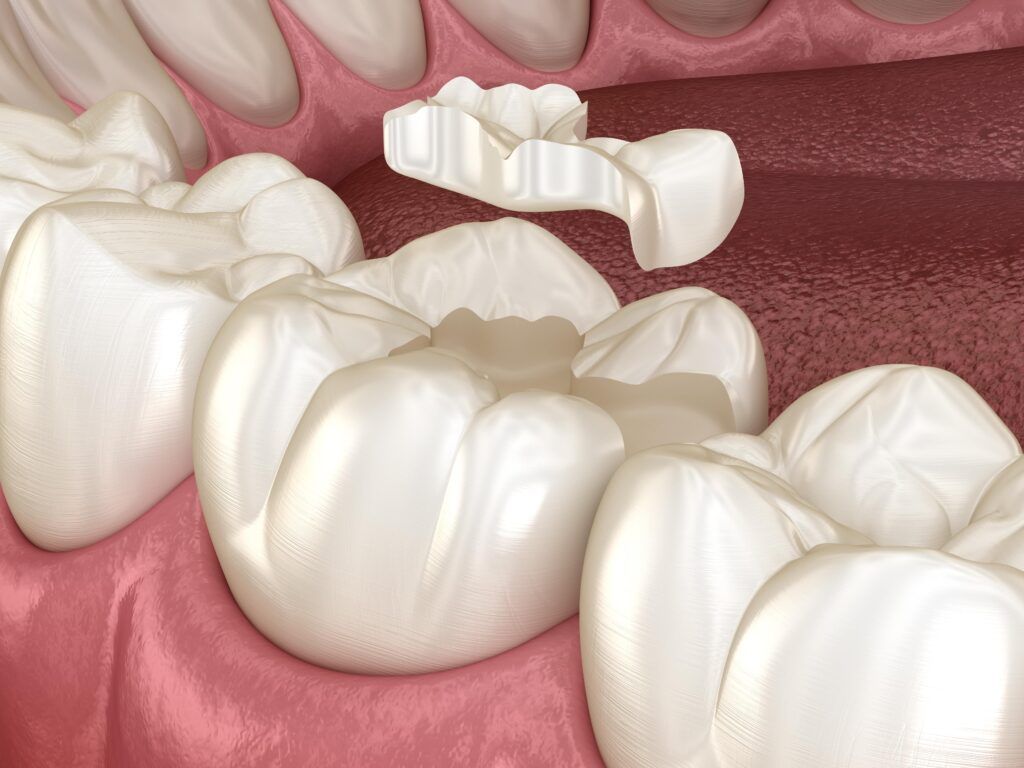
With traditional fillings, the dentist removes the decayed or damaged portion of the tooth and fills the space with filling material. This type of filling is called a “direct” filling because it is placed directly into the cavity. Direct fillings are typically made of composite resin or amalgam and are suitable for small to moderate-sized cavities.
In contrast, inlays/onlays are “indirect” fillings that are fabricated in a dental laboratory and then cemented into the tooth. Inlays fit inside the cusps (points) of the tooth and onlays cover one or more cusps. Inlays/onlays are often used for larger cavities or for areas of the tooth that are under more stress, such as the back molars.
Here’s a table summarizing the differences between dental inlays, onlays, traditional fillings, and dental crowns:
| Inlays | Onlays | Traditional Fillings | Crowns | |
| Size and Placement | Smaller, placed within the cusps of a tooth | Larger, covers a larger portion of the tooth | Small, placed within a cavity in the tooth | Larger, covers the entire tooth |
| Materials Used | Gold, porcelain, or composite resin | Gold, porcelain, or composite resin | Composite resin or amalgam | Porcelain, metal, or ceramic |
| Procedure | Two appointments, removal of decay and impression taken during first appointment, inlay placed during second appointment | Two appointments, removal of decay and impression taken during first appointment, onlay placed during second appointment | One appointment, removal of decay and filling material placed in cavity | Two appointments, tooth reshaped and impression taken during first appointment, crown placed during second appointment |
| Advantages | Durable, long-lasting, less tooth structure removal compared to crowns | Durable, long-lasting, less tooth structure removal compared to crowns, covers more extensive damage than inlays | Quick procedure, less expensive compared to inlays, onlays, and crowns | Strong, covers extensive damage, long-lasting |
| Disadvantages | Multiple appointments required, more expensive than traditional fillings | Multiple appointments required, more expensive than traditional fillings | Not as durable as inlays, onlays, and crowns | More tooth structure removal, more expensive compared to inlays, onlays, and traditional fillings |
It’s important to note that the best treatment option for a damaged or decayed tooth depends on the extent of the damage and the location of the tooth. A dentist can help determine which treatment option is best for your individual needs.
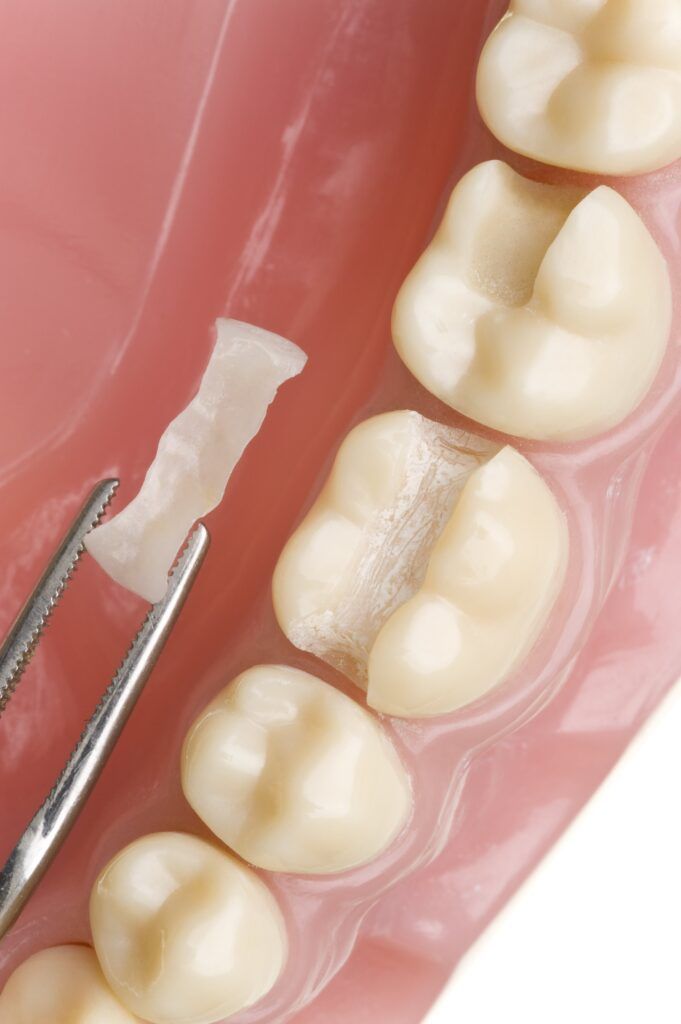
Inlays and onlays are a restorative dental procedure that involves replacing parts of a damaged or decayed tooth. Placement of an inlay or onlay usually takes two appointments. First, the dentist prepares the tooth by removing any decayed or damaged areas and taking an impression of the tooth. The impression is sent to a dental lab, where the inlay/onlay is custom-made to fit the tooth. In the meantime, a temporary filling is placed on the tooth to protect it. At the second appointment, the temporary filling is removed, and the permanent inlay/onlay is cemented into place.
Both types of restorations can be made from materials such as porcelain, gold, and composite resin. For optimal results, dentists usually recommend using porcelain because it’s strong yet aesthetically pleasing. When it comes to inlays and onlays, your dentist will assess their type and material according to the patient’s specific needs and preferences.
Caring for your inlays or onlays is an important part of maintaining your overall dental health. Cleaning these restorations can help keep them looking great and prevent bacteria from forming around them. Start by brushing twice a day with a soft-bristled toothbrush and fluoride toothpaste to remove plaque and debris. You also need to floss once a day to remove plaque and debris from between the teeth and along the gumline. Remember to also use a fluoride-rich mouthwash for an extra layer of protection against cavities and other dental problems. Finally, remember to attend regular check-up appointments with your dentist to have your inlay or onlay thoroughly checked and cleaned as needed. Taking good care of these restorations can help keep them looking great and ensure that they last for years to come!
Inlays and onlays are two great options for people who need more than a simple filling but don’t want or need a dental crown. They can be made from various materials, depending on your needs and preferences, and are placed directly onto the tooth. With proper care, inlays and onlays can last for many years. If you think you might need an inlay or onlay, talk to your dentist about which option is right for you.

Dr. Sadati possesses extensive experience in all aspects of advanced restorative dentistry, with an emphasis in cosmetic and implant dentistry. He has attained Accredited Fellow status in the American Academy of Cosmetic Dentistry (AACD), the most rigorous, demanding credentialing process in the world. He is the only AACD Accredited Fellow in South Florida.
Happy National Dentist’s Day! Today we’re celebrating by spotlighting the amazing work of cosmetic dentists. From simple teeth whitening to complete smile makeovers, these professionals have the power to boost confidence and brighten any day. Keep reading to learn more about what cosmetic dentists can do for you!
National Dentist’s Day is a special day in the year devoted to recognizing dental professionals for their exemplary work and commitment to patient care. It is also an excellent opportunity for us to celebrate the incredible impact dentists, particularly cosmetic dentists, make on our lives by improving and maintaining our smiles. On this day, we can reflect on their achievements, from saving us from discomfort to boosting our confidence with state-of-the-art treatments like teeth straightening or teeth whitening services.

National Dentist’s Day also exists to appreciate and celebrate the importance of dental health. Taking care of your teeth and gums is one of the most important things you can do for your overall health. A great place to start is a regular brushing routine: twice per day, and make sure to floss at least once. Eating a balanced diet with an emphasis on foods high in calcium such as yogurt, green leafy vegetables, and cheese also helps; this provides the nutrients that keep your teeth strong. Also, visiting a dentist regularly is key. Going twice a year allows them to check for any signs of cavities or other issues, as well as clean them to ensure they are healthy. Celebrate National Dentist’s Day by scheduling an appointment with your cosmetic dentist – why not show off those pearly whites!
Of course, National Dentist’s Day is primarily used to celebrate dentists. There are different types of dentists and one of these includes cosmetic dentists. A cosmetic dentist can do wonders for your smile – they can brighten, straighten, and align your teeth to give you the look of a lifetime.
| Feature | General Dentists | Cosmetic Dentists |
| Education | DDS or DMD degree | Same as general dentists |
| Training | Focus on preventing and treating oral health problems | Additional training in cosmetic procedures such as teeth whitening, veneers, and orthodontics |
| Services | Regular check-ups, cleanings, fillings, extractions, and dental X-rays | Same as general dentists, with a focus on improving the appearance of the teeth and smile |
| Purpose | Maintaining overall oral health | Maintaining oral health while improving the appearance of the teeth and smile |
Note: This is a general comparison and may vary depending on the specific dentist and their training and expertise. Some general dentists may also offer cosmetic services and vice versa.
Cosmetic dentists can use a variety of procedures to transform how you look and feel when it comes to showing off your pearly whites. Some cosmetic dental procedures include:
| Service | Description |
| Teeth Whitening | A procedure to remove or reduce stains and discoloration on the teeth, resulting in a brighter, whiter smile |
| Veneers | Thin shells of tooth-colored material that are bonded to the front of the teeth to improve the appearance of the teeth |
| Orthodontics | The use of braces or clear aligners to straighten crooked or misaligned teeth |
| Dental Implants | Artificial tooth roots that provide a base for fixed or removable replacement teeth |
| Dental Bonding | A procedure that uses a tooth-colored resin to repair chips, cracks, or gaps in the teeth |
| Invisalign | A clear aligner system used to straighten the teeth |
| Teeth Contouring | A procedure that reshapes the teeth to improve the appearance of the smile |
Note: This list is not exhaustive and there are many other cosmetic dental procedures available, each with its own specific purpose and technique. The best way to determine which cosmetic dental service is right for you is to consult with a cosmetic dentist.
At Florida Smiles, we understand that it’s important to have a dentist you can trust and rely on. Dr. Sadati provides both general and cosmetic dental services to make sure all your dental needs are met. With years of experience in the industry and the latest developments in modern dental technology, our staff is dedicated to providing patients with excellence in both general and cosmetic procedures. From routine checkups and cleaning, to more advanced services such as teeth whitening, invisalign, veneers, implants, and more – we are proud of our commitment to ensuring you receive the best possible treatment for you and your family! With us at Florida Smiles, you can expect top-notch service from knowledgeable professionals who truly care about giving you a healthier smile.

This National Dentist’s Day, we are celebrating our very own Dr. Sam S. Sadati! Dr. Sadati has been a leading cosmetic dentist in the West Palm Beach area for years, and National Dentist’s Day gives us the opportunity to highlight his many wonderful qualities!
Dr. Sadati graduated with honors from Creighton University School of Dentistry and has been practicing cosmetic dentistry since 1992. While he can provide general dentistry, his passion is in advanced restorative dentistry with an emphasis on cosmetic and implant dentistry. To make sure his patients get the best care, he is an accredited fellow of the American Academy of Cosmetic Dentistry (AACD). He is the only AACD Accredited Fellow in South Florida.
Dr. Sadati is also an active member of the most respected dental organizations, including:
From his meticulous attention to detail to his soothing chairside manner, Dr. Sadati stands out in the field of cosmetic dentistry. He makes it his mission to provide only the best service and care to each and every patient, taking time to ensure everyone feels heard and respected. From repairs on a single tooth to full smile makeovers, Dr. Sadati is an artist with teeth! We are proud of everything he brings to our practice and can’t wait for future patients to be able benefit from his unique talents.
National Dentist’s Day is the perfect opportunity to celebrate all the hardworking dentists out there who have dedicated their lives to helping others achieve and maintain optimal oral health! From the early history of dental care to modern day innovations in cosmetic dentistry, dentists have always been on the forefront of improving our smiles. At Florida Smiles, we are proud to offer a wide range of services that can help you achieve your dream smile. Whether you’re interested in teeth whitening, veneers, or dental implants, we have a treatment option that’s right for you. So what are you waiting for? Schedule a consultation with Dr. Sadati today and let us help you achieve your best smile yet!
Maybe you bit down too hard on a nut. Or maybe you noticed part of your teeth missing this morning while brushing. Maybe you even got hit in the face and noticed a piece of your tooth fly out of your mouth. No matter how it happened, if you’ve just chipped your tooth, don’t worry – you’re not alone. It’s a common problem, and there are several ways to fix it. In this blog post, we’ll walk you through the steps you need to take to make sure your tooth gets fixed as soon as possible. We’ll also give you a few options for how dentists fix chipped teeth. So read on and find out what to do if you chip your tooth!
When you first chip a tooth, you may be unsure of what to do next. But don’t worry – we’re here to help. Here are a few things you should do if you’ve just chipped your tooth:
If you can find the pieces of your tooth, save them! They may be able to be reattached by your dentist. Be sure to keep any tooth fragments damp in a paper towel that has been soaked in milk or water.
If your tooth is causing you pain and you cannot see your dentist right away, take ibuprofen or another over the counter pain medication. This will help to ease any discomfort you’re feeling until you can see the dentist.
You may also want to use ice to reduce pain and swelling in the area around your chipped tooth. Apply ice to the outside of your cheek for 20 minutes at a time. Do this as often as necessary until you can see the dentist.
Depending on the location and extent of your chipped tooth, your dentist may recommend one of the following options for fixing a chipped tooth:
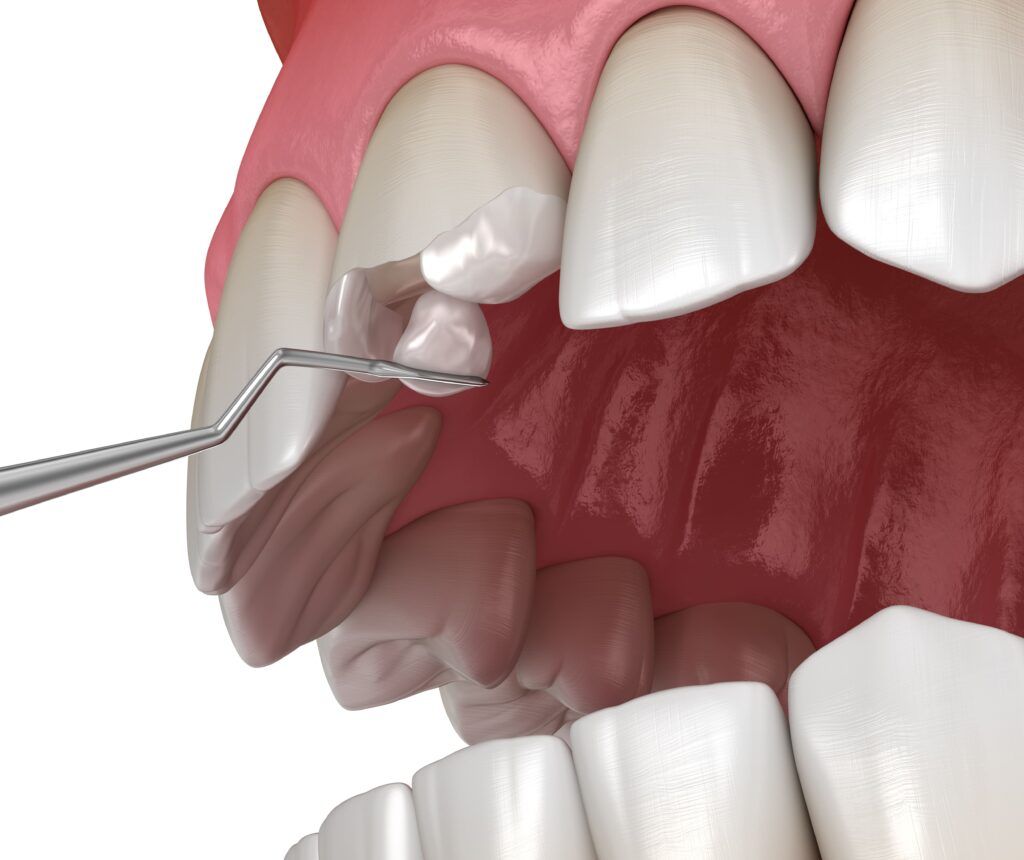
One popular option your dentist may recommend for fixing a chipped tooth is dental bonding. This is when a tooth-colored resin is used to fill in the chipped area. The resin is then hardened with a special light, and finally shaped and polished to match your natural tooth.
Another option for fixing a chipped tooth is veneers. Veneers are thin pieces of porcelain that are custom-made to fit over the front surface of your teeth. They can be used to fix a chipped tooth as well as other dental problems, such as teeth that are stained or misshapen.
A third option for fixing a chipped tooth is a crown. A crown is a “cap” that is placed over the entire surface of your tooth. Crowns can be made from different materials, such as porcelain, metal, or ceramic. However, many dentists opt for porcelain or ceramic due to its strength and natural appearance.
A fourth option for fixing a chipped tooth is a dental implant. A dental implant is a titanium post that is surgically placed into your jawbone. Once the post has healed, an artificial tooth (crown) is then placed on top of the post. This option is generally only used if the damage is substantial and cannot be fixed with other methods.
In this blog post, we’ve walked you through the steps to take if you’ve just chipped your tooth. We’ve also given you a few options for how dentists fix chipped teeth. No matter which option you and your dentist choose, fixing a chipped tooth is an important way to maintain your oral health. Be sure to see your dentist as soon as possible after you’ve chipped your tooth, so they can determine the best course of action for you. Thanks for reading!

Dr. Sadati possesses extensive experience in all aspects of advanced restorative dentistry, with an emphasis in cosmetic and implant dentistry. He has attained Accredited Fellow status in the American Academy of Cosmetic Dentistry (AACD), the most rigorous, demanding credentialing process in the world. He is the only AACD Accredited Fellow in South Florida.
Do you feel self-conscious about your smile? Do you feel like you are always hiding your teeth because they are crooked or “less than perfect?” Crooked teeth affect millions of people around the world and can lead to both oral health and self-esteem problems. Luckily, however, crooked teeth don’t need to be forever and there are several benefits to having your teeth straightened. In this blog post, we will discuss the benefits of having your teeth straightened and the different options available to you.
One of the most important benefits of having your teeth straightened is that it can lead to healthier teeth. When teeth are crooked, they can be more difficult to clean properly which can lead to an increased build-up of plaque and bacteria. This can then lead to tooth decay and gum disease. Straightening your teeth makes it easier to brush and floss properly, which leads to healthier teeth and gums.

Another benefit of having your teeth straightened is that it can make chewing easier. When teeth are crooked, they don’t line up correctly and this can make it difficult to bite and chew food properly. This can lead to indigestion and other digestive problems. Straightening your teeth can help to align your bite and make it easier to chew food properly.
Crooked teeth can also affect your speech. When teeth are not aligned correctly, it can cause you to slur your words or mispronounce certain sounds. This can be embarrassing and hard for people to understand you. Straightening your teeth can help to improve your speech and make it easier for people to understand you.
Crooked teeth can also lead to increased wear on your teeth. When teeth are not aligned properly, they can rub against each other and wear down over time. This can lead to tooth sensitivity and even damage to your teeth. Crooked teeth can also stick out and be more likely to get chipped or broken if you fall or are hit in the mouth. Straightening your teeth can help to reduce the wear on your teeth and reduce your risk of injury.
Crooked teeth can also be uncomfortable. When teeth are not aligned properly, they can rub against each other and cause pain in the mouth. Not only that, but they can strain your jaw joint and cause jaw pain and/or headaches. Straightening your teeth can help to improve comfort and reduce the pain in your mouth and jaw.
One of the most important benefits of having your teeth straightened is that it can increase your confidence. When you feel self-conscious about your smile, it can affect your confidence in social situations. Straightening your teeth can help you feel more confident about your smile and improve your self-esteem. Having straight teeth can also help you make a better first impression and be seen in a more positive light.

If you are considering having your teeth straightened, there are many options available to you. Metal braces and clear aligner therapy are two of the most popular options. Clear aligner therapy, such as Invisalign, is becoming increasingly popular due to its many benefits. At a glance, clear aligner therapy can offer the following benefits:
In this blog post, we discussed the various benefits of having your teeth straightened. These benefits include healthier teeth and gums, easier chewing, clear speech, reduced wear and risk of injury, improved comfort, and increased confidence. Clear aligner therapy is a popular option for those considering straightening their teeth due to its many benefits. If you are considering having your teeth straightened, be sure to talk to your dentist about all of your options.

Dr. Sadati possesses extensive experience in all aspects of advanced restorative dentistry, with an emphasis in cosmetic and implant dentistry. He has attained Accredited Fellow status in the American Academy of Cosmetic Dentistry (AACD), the most rigorous, demanding credentialing process in the world. He is the only AACD Accredited Fellow in South Florida.
If you’re one of the millions of people who experience tooth pain, you may be considering a root canal. This common dental procedure is often misunderstood, and as a result, many myths have developed around it. In this blog post, we will dispel some of these myths and provide accurate information about root canal therapy.
Root canal therapy is a procedure that is performed when the pulp of the tooth becomes infected. The pulp is the tissue that contains the blood vessels and nerves. During a root canal, the infected pulp is removed and the inside of the tooth is cleaned and sealed. This procedure is necessary when the infection has reached the root of the tooth. Root canal therapy is usually performed by a dentist or an endodontist, which is a dentist who specializes in this procedure.
There are many myths surrounding root canal therapy, and we will dispel seven of them here:
This is perhaps the most common myth about root canals. Many people believe that the procedure is painful, but this is not the case. In fact, root canal therapy relieves pain because it removes the infected pulp that is causing the pain. The procedure itself is usually not painful, and any discomfort that is experienced can be easily managed with local anesthesia.
This myth is based on a belief that was popular in the 1920s. However, this is not true and it was quickly disproven in the 1950s. In fact, root canal therapy actually helps to prevent further infection by removing the source of the infection.

Another common myth is that root canal therapy removes the tooth roots. This is not true. The roots of the tooth are not removed during a root canal. The only thing that is removed is the infected pulp. The roots of the tooth remain in place, and the tooth is actually stronger after a root canal because the inside is sealed and protected from further infection.
Many people believe that they do not need a root canal because they are not experiencing any pain. However, this is not always the case. The pulp can become infected without causing any pain. In fact, the infection may not cause any symptoms until it has reached the root of the tooth. By this time, the infection can cause serious damage to the tooth and may even lead to tooth loss. So, if you are experiencing any type of dental pain or abnormality, it is important to see a dentist right away.
Another common myth is that teeth usually need to be extracted after a root canal. This is not true. In most cases, the tooth can be saved with root canal therapy. In fact, teeth that have been treated with a root canal are actually stronger than teeth that have not been treated.
Many people believe that there is no sensation in the tooth after a root canal. This is not true. The nerve inside the tooth is removed during a root canal, so you will not feel any sensitivity to hot, cold, or sweet. However, you can still feel some pressure or tenderness in the tooth for a few days after the procedure. This is because there are still nerves in the tissues around the tooth roots. Some tenderness after a root canal is normal and will go away as the tooth heals.
The final myth we will dispel is that you do not need to visit the dentist after having a root canal. This is not true. It is important to visit the dentist for a follow-up appointment to make sure that the infection has been completely removed and that the tooth is healing properly.
In this blog post, we have dispelled seven common myths about root canal therapy. We hope that this has helped to clear up any misconceptions that you may have had about this procedure. If you are experiencing any dental pain, we encourage you to see a dentist right away. Root canal therapy is a safe and effective treatment for tooth infection, and it can save your tooth from further damage.

Dr. Sadati possesses extensive experience in all aspects of advanced restorative dentistry, with an emphasis in cosmetic and implant dentistry. He has attained Accredited Fellow status in the American Academy of Cosmetic Dentistry (AACD), the most rigorous, demanding credentialing process in the world. He is the only AACD Accredited Fellow in South Florida.
You may have heard the term “tooth cap” before, but you’re not sure what it means. In this blog post, we will provide a basic definition of a tooth cap and explain the difference between the terms dental cap and dental crown. We’ll also discuss some reasons why you might need a tooth cap, what materials they are made from, and what to expect when having one placed. Stay tuned!
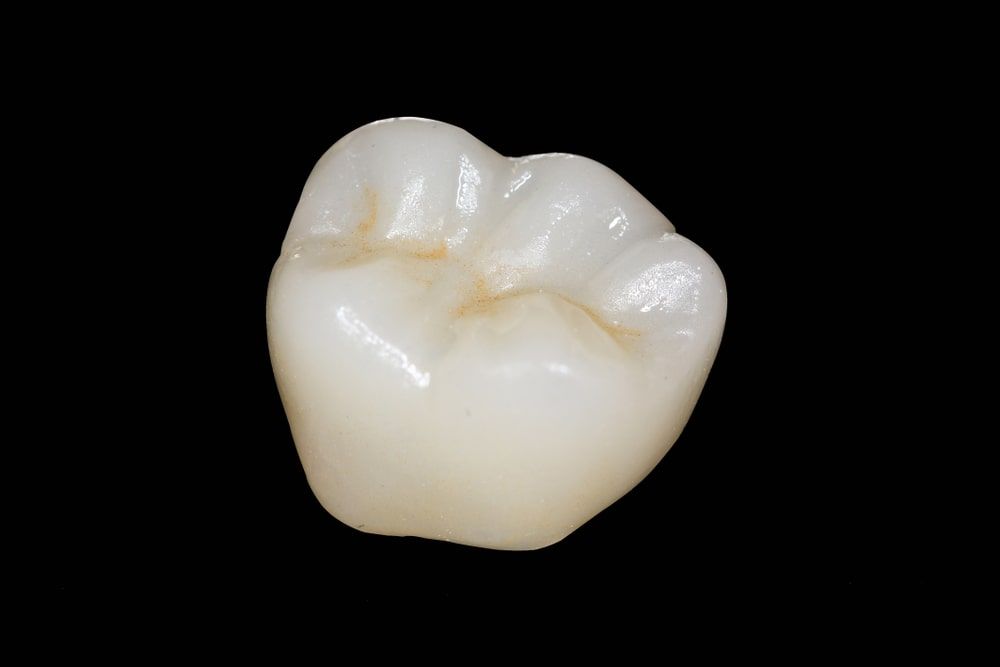
A tooth cap, also known as a dental crown, is a type of dental restoration that covers the entire tooth. Unlike a filling, which only fills in the cavity of the tooth, a crown encases the entire tooth. This is necessary when there is not enough healthy tooth remaining to support a filling. Crowns are also used:
Dental crowns can be made from a variety of materials, including porcelain, ceramic, metal, and composite resin. Porcelain and ceramic crowns are the most popular choice because they best match the color of your natural teeth. In fact, most dentists now recommend either porcelain or ceramic crowns. Metal crowns were once a good option, but they are highly visible and are no longer as common as they once were. In some cases, your dentist may recommend a porcelain fused to metal (PFM) option, which is made of a metal interior coated in porcelain. Composite resin crowns are less expensive than other options, but they are not as durable and can discolor over time. Because of this, composite crowns are often used as temporary dental crowns.
A temporary crown is made from a mold of your tooth and is used to protect the tooth while the permanent crown is being made. As mentioned above, temporary crowns are made of cheaper materials since they only need to last a few weeks. A permanent crown is made from quality dental materials and is meant to be a long-term solution. Once the permanent crown is ready, it will be cemented into place and the temporary crown will be removed.
The process of having a dental crown placed usually takes two visits to the dentist. This is because your dentist will need to prepare the tooth, take a dental impression, and then send off the necessary information so that a dental lab can fabricate the final restoration. In cases where an in-office milling machine is present, the entire process can be completed in one appointment.

During the first visit, your tooth will be prepared for the crown by removing any decay or damaged tissue. Once the tooth is prepared, your dentist will take a dental impression of the tooth so that they can send it off to the lab. To protect your tooth until the second appointment, a temporary crown will be placed over the prepared tooth.
At your second appointment, the temporary crown will be removed and replaced with your permanent crown. Your dentist will check to make sure that the fit and bite are correct, and then they will cement the crown into place. Once the cement has hardened, your new dental crown is ready to use!
In this blog post, we have discussed what a tooth cap is and some of the reasons why you might need one. We’ve also gone over the different materials that dental crowns can be made from and the difference between temporary and permanent crowns. Finally, we described the process of having a dental crown placed. We hope this blog post has helped answer some of your questions about tooth caps! If you’re considering getting a dental crown, be sure to talk to your dentist about which material is right for you. Thanks for reading!

Dr. Sadati possesses extensive experience in all aspects of advanced restorative dentistry, with an emphasis in cosmetic and implant dentistry. He has attained Accredited Fellow status in the American Academy of Cosmetic Dentistry (AACD), the most rigorous, demanding credentialing process in the world. He is the only AACD Accredited Fellow in South Florida.
Composite fillings are a great way to help strengthen teeth that may be weak or susceptible to cavities. If you have tooth pain or are in need of a filling, composite fillings may be the best option for you! In this blog post, we will discuss what composite fillings are made of, how they help to strengthen teeth, and the placement process.
Composite fillings are made of a dental material known as composite resin, which is a mixture of plastic (acrylic) resin and glass. This combination makes the filling strong and durable, while also providing a natural look to the tooth. The filling is placed in the cavity or hole in the tooth, and then hardened with a special light. Once it is hardened, the filling will bond to the tooth and provide long-lasting support.
Besides the fact that composite fillings help the teeth maintain a natural appearance, they are also used for their ability to strengthen the teeth. Composite fillings help to strengthen teeth in a few different ways:
When a composite filling is placed, only the damaged or decayed portion of the tooth needs to be removed. This helps to preserve as much of the healthy tooth structure as possible. Since your natural tooth structure is also preferential to any type of dental material or restoration, preserving your natural tooth structure also preserves your tooth’s natural strength.

The bonding process of composite fillings is unique in that it does not require the use of additional dental cements or adhesives. Instead, composite resin is able to bond directly to the tooth. This provides a strong, seamless bond that will help to keep the filling in place for many years.
Composite fillings can help to protect against tooth sensitivity by sealing off the exposed dentin to protect the nerve endings inside the tooth. This will help to keep hot and cold temperatures from causing discomfort.
If a composite filling becomes damaged, it can usually be repaired by adding new filling material. This is not possible with other types of fillings, such as amalgam. Since repairing a filling requires less modification than removing and replacing a filling, this helps to preserve your natural tooth.
Composite fillings can be used in a variety of different situations. They can be used to fill cavities, repair cracked or broken teeth, and even to change the shape or color of teeth. They can also be used in both the front and back teeth. Overall their versatility allows them to be used for a variety of applications.
Composite fillings are placed in a few simple steps:
In this blog post, we have discussed composite fillings and how they can help to strengthen teeth. We have also gone over what composite fillings are made of and the placement process. Composite fillings are a great way to help strengthen teeth. If you are in need of a filling, be sure to ask your dentist about composite fillings! Thanks for reading!

Dr. Sadati possesses extensive experience in all aspects of advanced restorative dentistry, with an emphasis in cosmetic and implant dentistry. He has attained Accredited Fellow status in the American Academy of Cosmetic Dentistry (AACD), the most rigorous, demanding credentialing process in the world. He is the only AACD Accredited Fellow in South Florida.
Cavities are one of the most common dental problems in the United States. In fact, over 50% of American adults have had at least one cavity in their lifetime. Cavities are caused by bacteria that consume sugar and produce acid. This acid attacks your teeth, causing decay and eventually a cavity. If you want to keep your smile healthy and cavity-free, it is important to avoid bad habits that can damage your teeth! In this blog post, we will discuss ten bad habits that can give you cavities.

Drinking soda is one of the worst things you can do for your teeth. Soda is full of sugar and acid, both of which contribute to cavities. The sugar in soda feeds the bacteria that produce acid, which attacks your teeth and causes cavities. It is important to avoid drinking soda if you want to keep your smile healthy. However, minimizing soda intake, using a straw, and rinsing your mouth with water after can all help decrease the damage done by soda.
Gummy snacks are another common source of sugar and acid. Like soda, the sugar in gummy snacks feeds the bacteria that produce acid. This acid then attacks your teeth and causes cavities. Gummy snacks also tend to accumulate on the rough surfaces of your teeth, where they can feed bacteria for hours. It is important to avoid chewing on gummy snacks if you want to keep your smile healthy. If you must have a gummy snack, go for the sugar-free options, brush your teeth afterwards, or at least rinse your mouth with water to remove the sugar and acid from your teeth.
Many people use their teeth as tools, such as to open a bottle or package. However, this can damage your teeth and cause cavities. When you use your teeth as tools, you put them at risk of being chipped or cracked. This damage can provide an opening for bacteria to enter your tooth and cause a cavity. It is important to avoid using your teeth as tools if you want to keep your smile healthy.
Grinding your teeth can damage your enamel and cause cavities. When you grind your teeth, you put them at risk of being chipped or cracked. This damage can provide an opening for bacteria to enter your tooth and cause a cavity. It is important to avoid grinding your teeth if you want to keep your smile healthy. If you think you grind your teeth, be sure to see your dentist right away so they can prescribe you a nightguard to protect your teeth.
If you are constantly snacking throughout the day, you are putting your teeth at risk of cavities. When you snack, you are exposing your teeth to sugar and acid. This sugar and acid can attack your teeth and cause cavities. It is important to avoid snacking constantly if you want to keep your smile healthy. If you must snack, be sure to pick foods that don’t cause plaque accumulation such as apples, carrots, or celery. You should also brush your teeth 30 minutes afterwards or rinse your mouth with water to remove the sugar and acid from your teeth.
Smoking is bad for your overall health, but it is also bad for your oral health. Smoking can damage your teeth and cause cavities. When you smoke, you are exposing your teeth to tar and nicotine. These substances can attack your teeth and cause decay. It is important to avoid smoking if you want to keep your smile healthy.
Many people think that they should brush their teeth immediately after eating. However, this is not the case. When you brush your teeth immediately after eating, you are actually brushing away the enamel that protects your teeth. This can damage your teeth and cause cavities. It is important to wait 30 minutes after eating before you brush your teeth. This will give your saliva time to neutralize the acid in your mouth and protect your teeth.

Many people think that they can floss their teeth without using floss. Instead, they may use things like fingernails, strands of hair, cutlery, toothpicks, or safety pins. However, by using these things to floss, you are actually damaging your teeth and risking injury to your gums. Not to mention, you are not effectively removing plaque and instead are allowing it to accumulate. It is important to only use floss when you floss your teeth.
Your toothbrush is an important tool in keeping your smile healthy. However, you need to maintain your toothbrush or it can become contaminated with bacteria. This bacteria can then be transferred to your teeth and cause cavities. It is important to allow your toothbrush to dry after use and replace it every three months when the bristles fade or fray.
Sharing eating utensils with someone who has cavities can put you at risk of getting cavities. When you share eating utensils, you are exposing your teeth to the bacteria that cause cavities, as well as possible cold or flu germs. It is important to avoid sharing eating utensils if you want to keep your smile healthy.
In this blog post, we have discussed ten bad habits that can damage your teeth and cause cavities. Cavities are a serious problem that can damage your teeth and cause pain. If you have cavities, be sure to see your dentist right away so they can fix the problem. There are many things you can do to prevent cavities, but the best way to avoid them is to see your dentist regularly and brush and floss your teeth daily.

Dr. Sadati possesses extensive experience in all aspects of advanced restorative dentistry, with an emphasis in cosmetic and implant dentistry. He has attained Accredited Fellow status in the American Academy of Cosmetic Dentistry (AACD), the most rigorous, demanding credentialing process in the world. He is the only AACD Accredited Fellow in South Florida.
Do you have unexplained tooth pain or sensitivity? If so, you may be suffering from cracked tooth syndrome. This condition is caused by a number of factors, and can lead to extensive damage to your teeth if left untreated. In this blog post, we will discuss what cracked tooth syndrome is, how to know if you have it, and the various causes and treatments for this condition. We hope that this information will help you get the relief that you need!
Cracked tooth syndrome is a condition characterized by a crack in the tooth. Sometimes the crack may be visible, while other times it may only be detectable via x-ray. In some cases, it can be hard to diagnose, especially if the crack is very small, below the gum line, or in between two teeth.
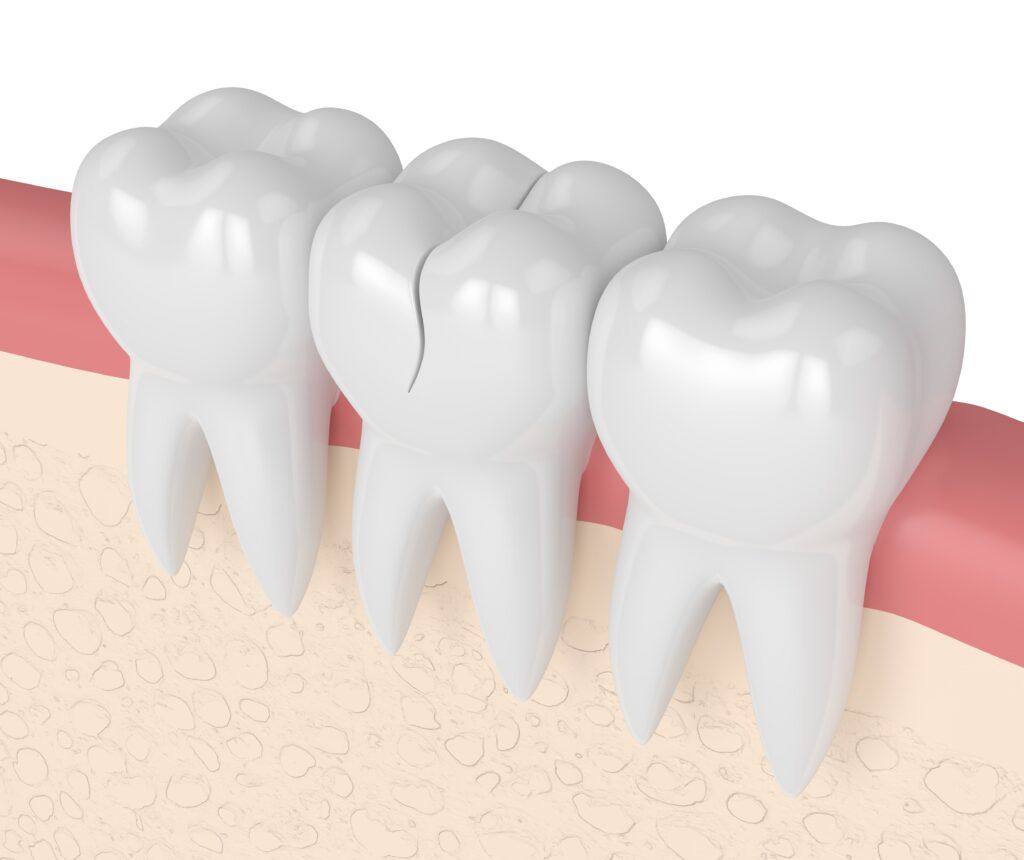
Cracked tooth syndrome is a condition that can be caused by a number of different factors. The most common cause is tooth decay, which weakens the structure of the tooth and makes it more susceptible to cracking. Other causes include:
Symptoms of cracked tooth syndrome include tooth pain or sensitivity, visible cracks in the tooth, and difficulty chewing. If you are experiencing any of these symptoms, it is important to see a dentist as soon as possible.
There are a few different ways that dentists can diagnose cracked tooth syndrome. The most common method is through dental x-rays, which can help to identify cracks that are not visible to the naked eye. Your dentist may also perform a physical examination of your mouth and teeth, and ask you questions about your symptoms.
If you have cracked tooth syndrome, it is important to get treatment as soon as possible. Depending on the severity of the condition, treatment can involve:
Dental bonding is a treatment option for cracked teeth that involves the use of a resin material. This material is applied to the tooth in order to fix the crack and restore the tooth’s strength and appearance. Dental bonding is a quick, easy, and affordable treatment that can be performed in a single visit to the dentist.
Dental crowns are another treatment option for cracked teeth. A dental crown is a “cap” that is placed over the tooth in order to protect it and restore its shape, size, and strength. Crowns can be made from a variety of materials, including porcelain, metal, or ceramic.
Root canal therapy is a treatment that is used to save a tooth that has been severely damaged by decay or injury. During this procedure, the dentist will remove the damaged tissue from inside the tooth, clean and disinfect the area, and then fill it with a special material. Root canal therapy can be performed in one or more visits to the dentist, depending on the severity of the damage.
In some cases, the only way to treat cracked tooth syndrome is to have the tooth extracted. This is typically only done in cases where the tooth is so severely damaged that it cannot be saved with other treatment options.
In this blog post, we have discussed what cracked tooth syndrome is, how to know if you have it, and the various causes and treatments for this condition. We hope that this blog post has been informative and helpful! If you are experiencing any symptoms of cracked tooth syndrome, don’t hesitate to see a dentist. With prompt treatment, you can get relief from your symptoms and prevent further damage to your teeth. Thanks for reading!

Dr. Sadati possesses extensive experience in all aspects of advanced restorative dentistry, with an emphasis in cosmetic and implant dentistry. He has attained Accredited Fellow status in the American Academy of Cosmetic Dentistry (AACD), the most rigorous, demanding credentialing process in the world. He is the only AACD Accredited Fellow in South Florida.
Vaping is becoming an increasingly popular way to consume nicotine, and many people are under the impression that it is a safer alternative to smoking cigarettes. However, there is still much we don’t know about the long-term effects of vaping on our oral health. In this blog post, we will discuss the potential dangers of vaping and how it can affect your teeth and gums. If you are a vaper or have a child who vapes, then this information is important to know!

Vaping is the act of inhaling and exhaling vapor produced by an electronic cigarette or similar device. The vapor typically contains nicotine, propylene glycol, and flavorings, however the exact formulation can vary. Vaping is different from smoking cigarettes because there is no combustion involved. This means that there is no tobacco smoke being inhaled into the lungs.
Because of this, many people are under the impression that vaping is healthier than smoking cigarettes. Although there is some research that suggests vaping may have less oral health risks than smoking, there is little evidence available to support this theory. Not to mention, there has been little research on the long-term effects of vaping since it is a rather new phenomenon.
Whether or not the risks associated with vaping are comparable to smoking, it is important to note that vaping is not risk-free. In fact, there are several ways that vaping can affect your oral health.
One of the most common effects of vaping is dry mouth, or a lack of saliva production. This occurs because the propylene glycol in the vapor pulls moisture from your mouth and throat. Vape juice that contains nicotine can also make dry mouth worse. This can lead to an increase in cavities and gum disease, since saliva is used to keep the mouth clean.
Additionally, vaping can cause tooth decay by increasing the amount of acid-producing bacteria in your mouth. This acid can break down the enamel on your teeth, making them more susceptible to decay. Vape juice containing nicotine can increase the risk of tooth decay since nicotine can increase the amount of plaque accumulation on the teeth.
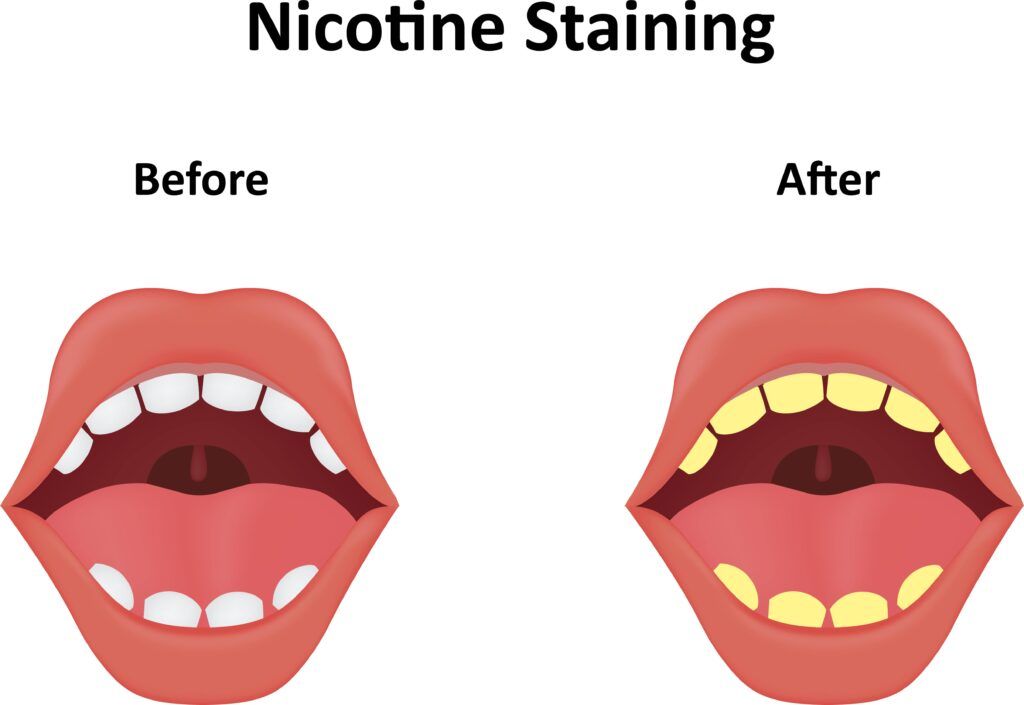
Vaping can also stain your teeth. The nicotine in the vapor turns yellow when it comes into contact with oxygen, and this can cause your teeth to become discolored. Additionally, the propylene glycol in the vapor can attach to plaque and cause it to become more difficult to remove.
Another common effect of vaping is bad breath. This is because the vapor from the electronic cigarette can cause bacteria to build up in your mouth and throat. Additionally, the propylene glycol in the vapor can make your saliva thicker, which can lead to a buildup of bacteria.
Finally, vaping can also cause gum disease. The propylene glycol in the vapor can irritate your gums and lead to inflammation. This inflammation can eventually lead to periodontal disease, which is a serious form of gum disease that can damage the tissues and bone supporting your teeth. Gum inflammation is also more likely to occur in people who use vape juice containing nicotine and/or artificial flavorings.
In this blog post, we have discussed the potential risks of vaping on oral health. Although more research is needed to determine the long-term effects of vaping, it is clear that there are some potential dangers associated with this habit. If you are a vaper or have a child who vapes, be sure to talk to your dentist about the best way to protect your teeth and gums. Remember, it’s important to take care of your mouth so that you can enjoy a healthy smile for years to come!

Dr. Sadati possesses extensive experience in all aspects of advanced restorative dentistry, with an emphasis in cosmetic and implant dentistry. He has attained Accredited Fellow status in the American Academy of Cosmetic Dentistry (AACD), the most rigorous, demanding credentialing process in the world. He is the only AACD Accredited Fellow in South Florida.
Most people know the obvious dangers of not taking care of their teeth: Tooth Decay, Gum Disease, Bad Breath. But what about the hidden dangers? Did you know that Pneumonia, Diabetes, Rheumatoid Arthritis, and Heart Disease are all linked to poor oral health? That’s right! It is vitally important to take care of your teeth and gums if you want to stay healthy and avoid these serious illnesses. In this blog post, we will discuss the hidden dangers of not taking care of your teeth, as well as some tips on how to properly care for them.
Tooth decay is caused by bacteria that build up on the teeth and release acids that eat away at the enamel. This can lead to cavities, which are holes in the teeth. If left untreated, tooth decay can cause pain, infection, and even tooth loss.

Gum disease is an infection of the gums that can lead to tooth loss. It is caused by plaque, a sticky film of bacteria that forms on the teeth. If not removed with regular oral hygiene, plaque hardens into tartar, which irritates the gums and leads to inflammation. Over time, the bacteria that accumulates will eventually infect the gum tissue.
Bad breath is caused by bacteria in the mouth that release sulfur compounds. These compounds make the breath smell unpleasant. Bad breath can be embarrassing and cause social anxiety. It can also be a symptom of gum disease or tooth decay.
Poor oral health can lead to low self-esteem. This is because people who are not confident in their smile are often less likely to interact with others. This can lead to social isolation and depression.
Pneumonia is a lung infection that can be deadly. It is caused by bacteria, viruses, or fungi that enter the lungs through the mouth. Poor oral health increases the risk of pneumonia because it allows bacteria to travel from the mouth to the lungs.
There is a close relationship between diabetes and gum disease. People with diabetes are more likely to develop gum disease. This is because diabetes lowers the body’s ability to fight infection. Gum disease can also make it harder to control blood sugar levels. On the other side, people with gum disease are also more likely to develop diabetes, since gum disease causes inflammation within the body.

Rheumatoid arthritis is an autoimmune disease that causes inflammation of the joints. RA can be caused by bacteria in the mouth that enter the bloodstream and trigger the immune system. Poor oral health increases the risk of rheumatoid arthritis because it allows these bacteria to enter the bloodstream. Once bacteria has entered the bloodstream, it continues the inflammation and makes RA symptoms more severe.
Heart disease is the leading cause of death in the United States. It is caused by plaque buildup in the arteries, which can restrict blood flow and lead to a heart attack. Poor oral health increases the risk of heart disease because it allows plaque to build up in the arteries.
There are many ways to prevent these hidden dangers. The best way to avoid them is to practice good oral hygiene. This means brushing your teeth twice a day, flossing daily, and visiting the dentist regularly. By taking care of your teeth, you can avoid these serious illnesses and keep your mouth healthy!
In this blog post, we have discussed the hidden dangers of not taking care of your teeth. We have also listed some tips on how to properly care for them. Remember, it is vitally important to take care of your teeth and gums if you want to stay healthy and avoid these serious illnesses. If you have any questions or concerns, please feel free to contact us. We would be more than happy to help you in any way we can. Thanks for reading!

Dr. Sadati possesses extensive experience in all aspects of advanced restorative dentistry, with an emphasis in cosmetic and implant dentistry. He has attained Accredited Fellow status in the American Academy of Cosmetic Dentistry (AACD), the most rigorous, demanding credentialing process in the world. He is the only AACD Accredited Fellow in South Florida.
Wisdom teeth are the third and final set of molars that most people get in their late teens or early twenties. Also known as “third molars,” wisdom teeth usually erupt between the ages of 17 and 25. Most people have four wisdom teeth, one in each quadrant of the mouth. Wisdom teeth are so named because they are generally the last teeth to come in – hence, the “wisdom” part of their name. In this blog post, we will discuss wisdom teeth eruption, symptoms of eruption, when to see a dentist, and extraction procedures.
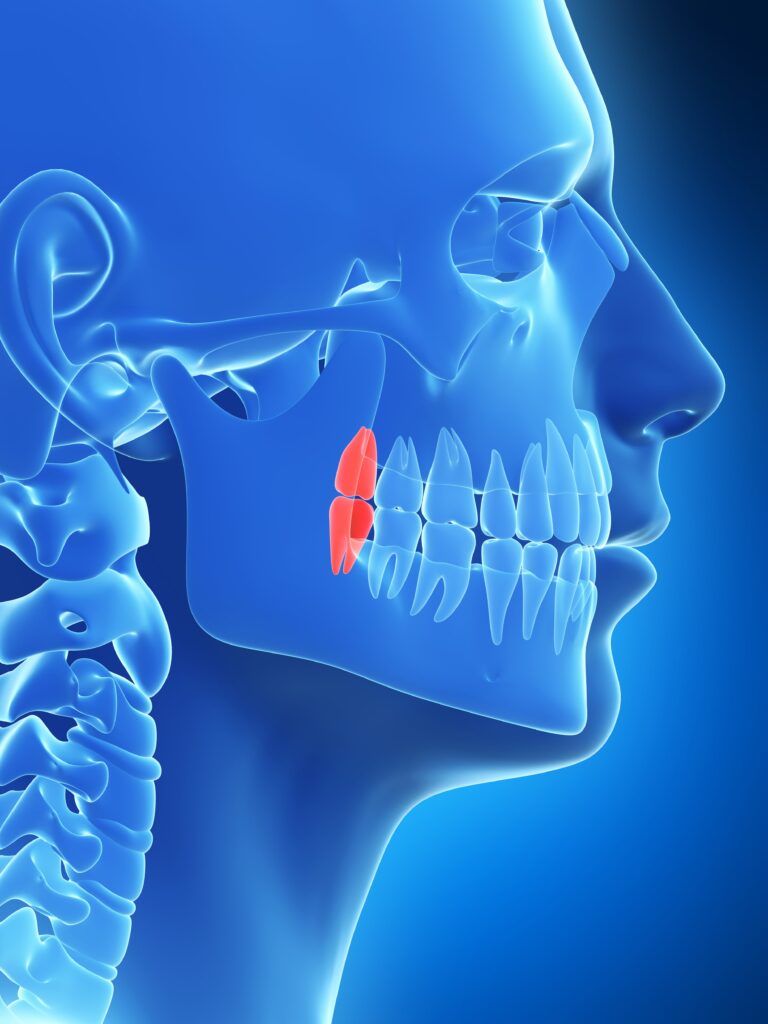
As mentioned above, wisdom teeth are the third and final set of molars that most people get. They are so named because they are generally the last teeth to come in – hence, the “wisdom” part of their name. Wisdom teeth usually erupt between the ages of 17 and 25. Most people have four wisdom teeth, one in each quadrant of the mouth.
It is believed that wisdom teeth exist because our ancestors had a diet that was much tougher to chew than what we eat today. The extra set of molars helped them to grind down food so they could get the nutrients they needed. However, as our diets have changed and become softer, we no longer need that extra set of molars.
In fact, wisdom teeth can actually cause problems because they often become impacted, meaning they grow in at an angle and get stuck. This can crowd or damage other teeth, and it can also be quite painful. Impacted wisdom teeth will usually need to be extracted by a dentist.
There are a few symptoms that may indicate that your wisdom teeth are coming in. These include:

If you experience any of these symptoms, you should see a dentist as soon as possible. They will be able to take x-rays and determine if your wisdom teeth are impacted and need to be extracted.
Impacted wisdom teeth can lead to a variety of complications if left untreated. They can crowd or damage other teeth, cause pain and swelling, and even lead to infection, cysts, or tumors. That’s why it’s important to see a dentist as soon as you notice any symptoms of wisdom teeth eruption.
There are two main types of wisdom teeth extractions: simple and surgical. A simple extraction is when the tooth is visible and can be removed with forceps and an elevator tool. A surgical extraction is more complex and requires cutting through the gum tissue to remove the tooth. This type of procedure is usually only necessary if the tooth is impacted or otherwise difficult to remove. Some dentists may only offer one type of extraction, so it is important to speak with your dentist about this.
In this blog post, we have discussed wisdom teeth: what they are, when they come in, and why they need to be extracted. We have also gone over the symptoms of wisdom teeth eruption and when you should see a dentist. Finally, we explained the difference between simple and surgical extractions.
If you are experiencing any wisdom tooth pain or other symptoms, don’t hesitate to see a dentist. They will be able to determine if your wisdom teeth need to be extracted and recommend the best course of action. Thanks for reading!

Dr. Sadati possesses extensive experience in all aspects of advanced restorative dentistry, with an emphasis in cosmetic and implant dentistry. He has attained Accredited Fellow status in the American Academy of Cosmetic Dentistry (AACD), the most rigorous, demanding credentialing process in the world. He is the only AACD Accredited Fellow in South Florida.
If you are experiencing pain or discomfort when chewing, it might be time to visit your dentist. Chances are, you will need a dental restoration to fix the problem. There are two main types of indirect fillings: inlays and onlays. If you’re like most people, you probably don’t know the difference between an inlay and an onlay. And that’s okay! In this blog post, we will compare the two and help you decide which is best for you!
Before discussing which is best for you, we need to understand the basics of dental inlays and onlays. For starters, both restorations are known as indirect fillings. An indirect filling is a type of dental restoration that is used to fill cavities or repair cracked or broken teeth. Indirect fillings are made outside of the mouth and are then bonded to the tooth. They are usually made from materials such as gold, porcelain, or composite resin.
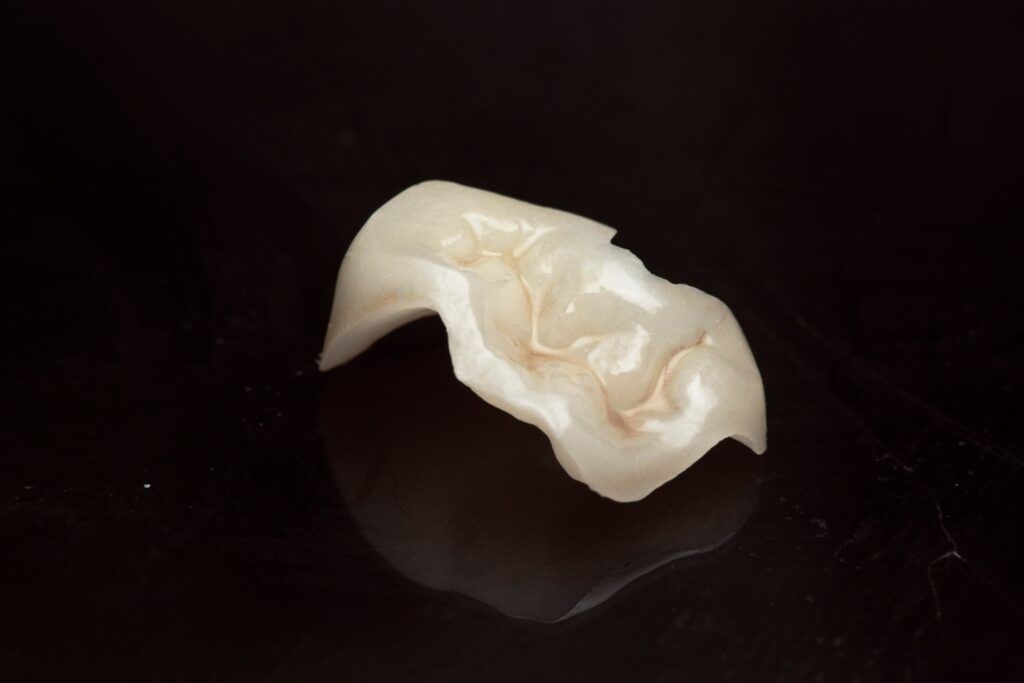
The main difference between an inlay and onlay is the size of the restoration, as well as where it is located. An inlay is used to restore a small area of tooth decay and is bonded to within the center of the tooth’s chewing surface. Onlays, on the other hand, are used to restore larger areas of tooth decay or damage. With an onlay, either the entire chewing surface is restored and/or one or more of the tooth’s cusps.
To place an inlay or onlay, two dental appointments are generally required. During the first appointment, the tooth is prepared for restoration. This involves removing any decay or damaged tissue. Once the tooth is prepared, an impression is made and sent to a dental laboratory where the inlay or onlay will be fabricated.
During your second appointment, the inlay or onlay will be checked for fit and then bonded to the tooth using dental cement. The margins are then polished to ensure a seamless fit between the restoration and your natural tooth structure.
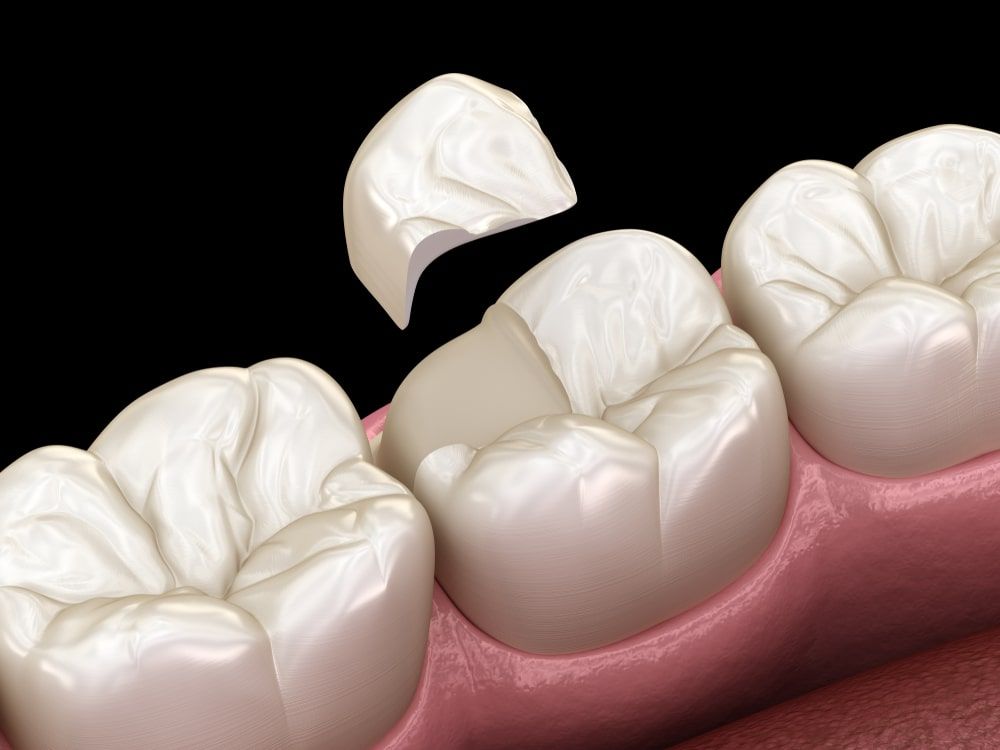
Inlays and onlays are often used in cases where the area affected by tooth decay is too large to adequately restore with a composite filling, but not severe enough to warrant the placement of a dental crown. In these cases, an inlay or onlay can be placed as a way of restoring the tooth, while preserving the majority of its natural, healthy structure.
So, which type of indirect filling is best for you? The answer to this question depends on several factors. These include the size of the cavity, the location of the cavity, and the severity of the tooth decay.
In general, inlays are best for small cavities located within the center of the tooth’s chewing surface. Onlays are best for larger cavities that affect one or more of the tooth’s cusps.
If you’re not sure which type of indirect filling is right for you, schedule an appointment with your dentist. They will be able to assess your needs and make a recommendation based on your individual case.
In this blog, we have compared dental inlays and onlays. We’ve discussed the basics of indirect fillings and the difference between an inlay and onlay. And finally, we’ve helped you decide which type of restoration is best for you!
If you think you might need a dental inlay or onlay, don’t hesitate to contact our office to schedule an appointment. We would be more than happy to help you restore your smile!

Dr. Sadati possesses extensive experience in all aspects of advanced restorative dentistry, with an emphasis in cosmetic and implant dentistry. He has attained Accredited Fellow status in the American Academy of Cosmetic Dentistry (AACD), the most rigorous, demanding credentialing process in the world. He is the only AACD Accredited Fellow in South Florida.
We all know that person. The one who always has bad breath, no matter what they do. It can be embarrassing and oftentimes, people don’t even want to be around them. But did you know that bad breath is more than just a social inconvenience? In fact, it can be a sign of something much more serious. In this blog post, we will discuss the many causes of bad breath and how to get rid of it for good!
So, what exactly is halitosis? Halitosis is the medical term for bad breath. It can be caused by a number of different factors and oftentimes, it is a symptom of another underlying condition. Some common symptoms of halitosis include bad breath that persists even after brushing your teeth and/or a sour or metallic taste in your mouth.
There are many different factors that can cause bad breath. Some of the most common include:

The bacteria that live in your mouth thrive on leftover food particles. When these particles are not removed, bacteria feed on them and release foul-smelling waste products. More bacteria equals more odors.
Certain foods and drinks can cause bad breath. Common offenders include garlic, onions, coffee, and alcohol. This is because they have strong odors that linger in the mouth. They can also affect the way you breath smells once they are digested and absorbed into the body.
If you don’t brush and floss your teeth regularly, the food and bacteria in your mouth will begin to decompose and cause bad breath. In addition, if you don’t remove plaque from your teeth, it can harden and turn into tartar. Tartar is a breeding ground for bacteria and can cause bad breath.
Sugar is a food source for the bacteria in your mouth. When these bacteria break down sugar, they release acidic gasses that can cause bad breath.
Smoking is a major cause of bad breath. The tar and nicotine in cigarettes coat your teeth and tongue, which leads to an increase in bacteria. In addition, smoking dries out your mouth and decreases saliva production. Saliva is important because it helps to remove food particles and bacteria from your mouth.
Digestive problems such as GERD, gastritis, and Crohn’s disease can cause bad breath. This is because they allow stomach acids to flow back up into the esophagus. When these acids mix with the bacteria in your mouth, they release foul-smelling gases.
Dry mouth is a condition where there is not enough saliva in your mouth. This can be caused by medications, medical conditions, or simply not drinking enough water. Without saliva to remove food particles and bacteria, they begin to decompose and cause bad breath.
Gum disease is an infection of the gums that can be caused by plaque buildup. When plaque hardens into tartar, it irritates the gums and causes them to become inflamed. This inflammation can lead to gum disease, which can cause bad breath.

Now that we know the many different causes of bad breath, let’s discuss how to get rid of it. The first step is to practice good oral hygiene. This means brushing your teeth twice a day and flossing once a day. In addition, you should brush your tongue or use a tongue scraper to remove bacteria. You should also see your dentist regularly for professional cleanings.
If you are a smoker, quitting smoking is the best way to get rid of bad breath. If you have a dry mouth, there are a few things you can do to help. Chew sugar-free gum or suck on sugar-free candy to stimulate saliva production. You should also avoid alcohol and caffeine, which can cause dehydration. In addition, try to drink six to eight glasses of water each day.
In this blog, we have discussed bad breath and its many causes. We have also discussed how to get rid of bad breath. If you are concerned about your breath, the best thing to do is to see your dentist. They will be able to determine if you have gum disease or another condition that is causing your bad breath. Thanks for reading!

Dr. Sadati possesses extensive experience in all aspects of advanced restorative dentistry, with an emphasis in cosmetic and implant dentistry. He has attained Accredited Fellow status in the American Academy of Cosmetic Dentistry (AACD), the most rigorous, demanding credentialing process in the world. He is the only AACD Accredited Fellow in South Florida.
We all know that a beautiful smile is important. It can make us feel more confident and help us get ahead in life. That’s why it’s no surprise that one of the most common reasons people visit a cosmetic dentist is because they are unhappy with the appearance of their teeth. However, do you know what the number one reason for visiting a cosmetic dentist is? In this blog, we’ll discuss the number one reason to visit a cosmetic dentist: stained teeth. We will also mention other reasons why people might visit a cosmetic dentist, such as crooked teeth, receding gums, and spaces between the teeth, as well as some treatments that can help.

A recent article by the New York Post notes that 7 out of 10 people feel self-conscious about their smile. When asked what their reasons were, the top concern was that their teeth were not white and instead appeared stained.
Teeth can become stained for a variety of reasons. For example, many foods and drinks can cause staining, including coffee, tea, and red wine. Smoking is also a major culprit when it comes to staining teeth. Over time, these stains can become more and more difficult to remove with basic brushing and flossing.
Fortunately, there are treatments available that can help. Teeth whitening is a popular treatment for stained teeth. This procedure uses bleaching agents to remove the stains from your teeth, giving you a brighter, whiter smile. If your teeth are severely stained or yellowed, you may need to visit a cosmetic dentist for professional teeth whitening.
Another option for treating stained teeth is veneers. Veneers are thin, porcelain shells that are placed over the front of your teeth. They can be used to cover up stains as well as other imperfections, such as chips or cracks.
Composite bonding is another treatment that can be used to cover up stained teeth. With this procedure, a tooth-colored resin is applied to the teeth and then hardened with a special light. This helps to improve the appearance of your smile and can also be used to fill in spaces between the teeth.
While stained teeth are one of the most common reasons people visit a cosmetic dentist, the article also noted that crooked teeth, receding gums, and spaces between the teeth also made the list of common cosmetic concerns.
Luckily, these imperfections can also be corrected using one or more cosmetic dental treatments. Like stained teeth, crooked teeth or teeth with spaces between them can be corrected using veneers or composite bonding. Orthodontic treatment can also provide a permanent solution. Even gum recession can be treated using periodontal procedures aimed at improving the health and appearance of the gum tissue.
In this blog, we’ve discussed the number one reason why people visit a cosmetic dentist: stained teeth. We’ve also mentioned some other common reasons, such as crooked teeth, receding gums, and spaces between the teeth. Finally, we’ve provided some information on treatments that can help improve the appearance of your smile, including teeth whitening, veneers, and composite bonding. Nowadays, having a beautiful smile that you can be proud of is easier than ever. If you’re unhappy with your smile, be sure to consult a cosmetic dentist to find out what treatment options are available to you.
If you have any questions or would like to schedule an appointment, please contact our office. We would be happy to help you achieve the smile of your dreams!
Thank you for reading! We hope this blog was helpful.

Dr. Sadati possesses extensive experience in all aspects of advanced restorative dentistry, with an emphasis in cosmetic and implant dentistry. He has attained Accredited Fellow status in the American Academy of Cosmetic Dentistry (AACD), the most rigorous, demanding credentialing process in the world. He is the only AACD Accredited Fellow in South Florida.
Do you have one or more missing teeth? Are your dentures loose and uncomfortable? Do you struggle to chew your food? If so, dental implants may be the right solution for you! Dental implants are artificial tooth roots (posts) that are implanted into the jawbone. The post is then connected to an artificial tooth or teeth. Dental implants can be used to replace a single tooth or an entire set of teeth. They look and feel like natural teeth, and they allow you to eat and speak normally. Here are nine signs that you need a dental implant:
Teeth can become infected for a variety of reasons, including decay, gum disease, and trauma. If you have an infected tooth, you will often have the choice between root canal therapy and extracting the tooth. Your dentist may recommend an extraction if you have already had a failed root canal or if the infection is severe. Once the tooth is removed, you can choose to replace it with a dental implant.
If you have a broken tooth, it can be extremely painful. In some cases, the tooth can be repaired with a filling, crown, or veneer. However, if the tooth is severely damaged or the root has been affected, your dentist may recommend that it be extracted. Once the tooth is removed, you can replace it with a dental implant.
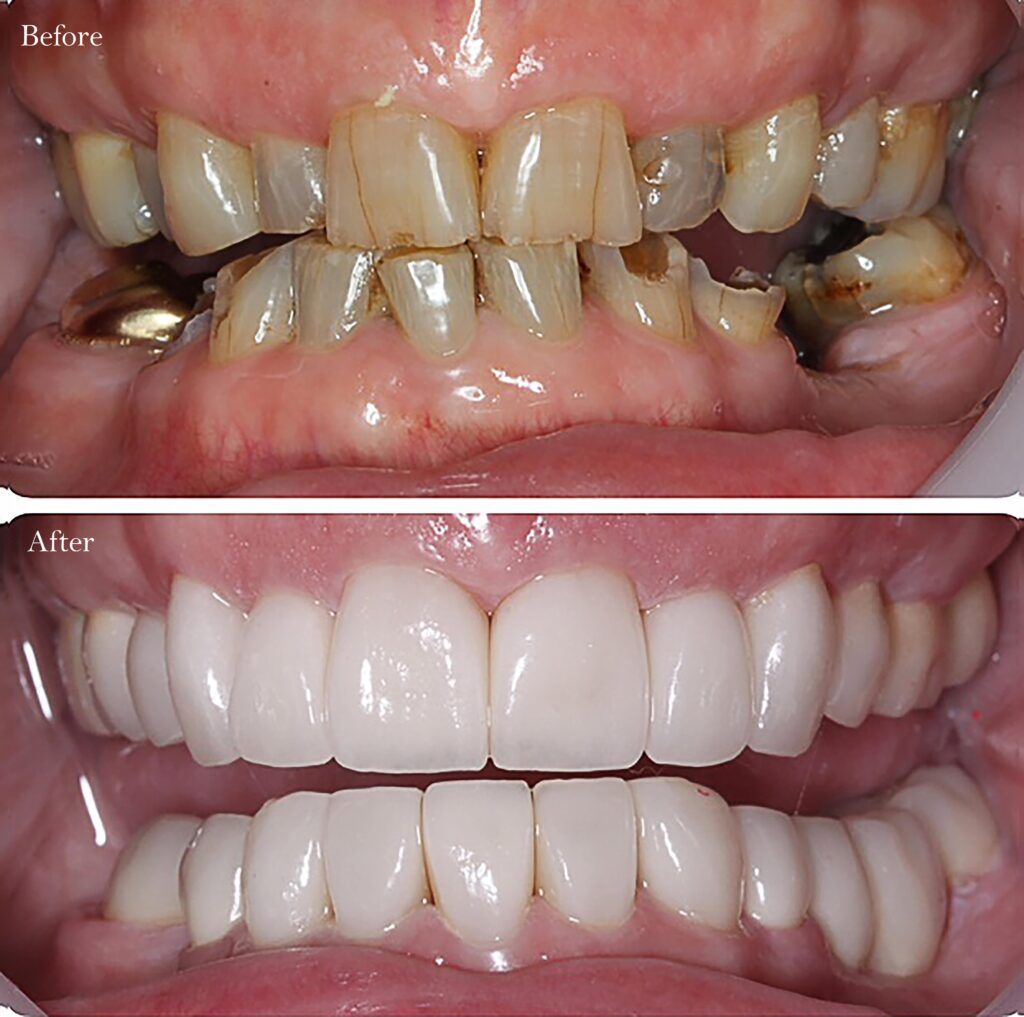
If you have one or more missing teeth, you may be self-conscious about your smile. Not to mention you are at an increased risk for other dental issues down the line. Dental implants can be used to replace one or more missing teeth, giving you a natural-looking smile and preventing future issues that are common with missing teeth.
If you have lost one or more teeth, you may struggle to chew your food. This can make eating a difficult and uncomfortable experience. Dental implants can help you to eat normally by restoring your ability to chew properly.
If you have a dental bridge, you may have noticed that it is becoming loose. This can be extremely uncomfortable and make it difficult to eat and speak normally. A loose bridge can also damage the surrounding teeth and gums. Dental implants can be used to secure your dental bridge, so you can feel confident that it will stay in place.
If you are self-conscious about your smile due to damaged, decayed, or missing teeth, dental implants can help you to feel more confident. Dental implants look and feel like natural teeth, so no one will be able to tell that you have them.
If you have lost one or more teeth, your face may have a sunken-in appearance. This is because the bone that supports the tooth roots starts to deteriorate when the teeth are lost. Dental implants can help to prevent this bone loss and keep your face looking youthful.
If you wear dentures, you may have noticed that they are becoming loose. This can be extremely uncomfortable and make it difficult to eat and speak normally. Dental implants can be used to secure your dentures, so you can feel confident that they will stay in place.
If you are tired of dealing with dentures that are loose and uncomfortable, dental implants may be the right solution for you. Dental implants are permanent and will not need to be replaced like dentures.
If you are experiencing any of these problems, dental implants may be the right solution for you. Be sure to talk to your dentist about whether or not dental implants are right for you.

Dr. Sadati possesses extensive experience in all aspects of advanced restorative dentistry, with an emphasis in cosmetic and implant dentistry. He has attained Accredited Fellow status in the American Academy of Cosmetic Dentistry (AACD), the most rigorous, demanding credentialing process in the world. He is the only AACD Accredited Fellow in South Florida.
Are you looking for a way to improve the look of your smile? If you’re considering dental veneers to improve your smile, you’re in good company! Veneers are one of the most popular cosmetic procedures in the world. A veneer is a thin shell of porcelain or composite that is bonded to the front surface of a tooth. They are made of durable materials that can last for many years with proper care. In this blog post, we will discuss how to keep your veneers white and looking their best!
There are two types of veneers: porcelain and composite. Porcelain veneers are made of a ceramic material that is durable and can last for many years. Porcelain veneers are usually placed in two appointments. The first appointment is to take impressions of your teeth and to place a temporary veneer on your tooth. A dental lab will then fabricate the veneers and the second appointment is used to place the permanent porcelain veneer on your tooth.
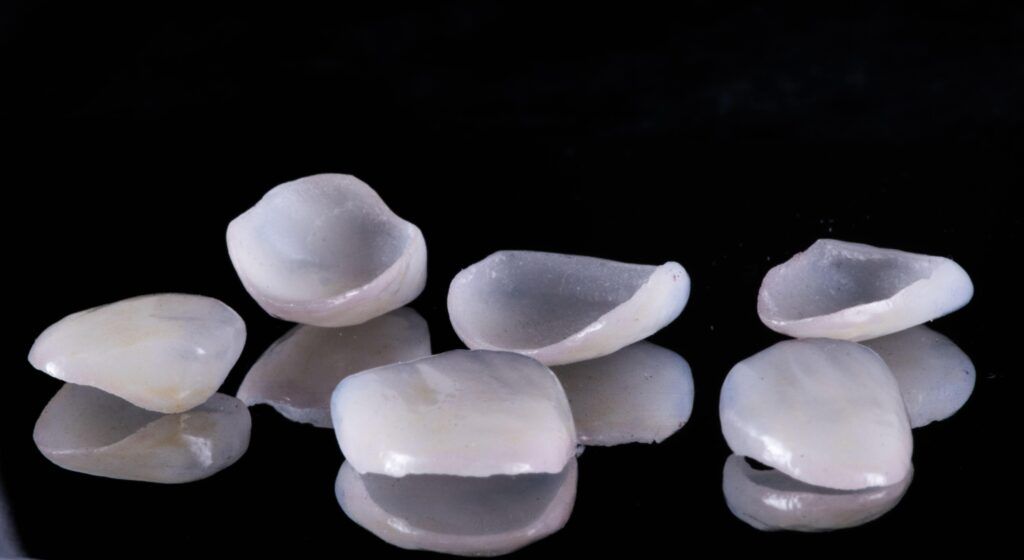
Composite veneers are made of a plastic material that is less durable than porcelain, but can be less expensive. Composite veneers are placed in a single appointment. The dentist will roughen the surface of your tooth and then apply a bonding agent. The composite material is then placed on top of the bonding agent and sculpted into shape. A curing light is then used to harden the composite material.
Dental veneers are an excellent way to improve the look of your smile. They can be used to correct a wide variety of imperfections, including:
When it comes to keeping your veneers white, it is important to note that composite veneers stain easier than porcelain. Porcelain veneers are made to be stain-resistant, although they can still stain if they become damaged. With proper care, your veneers can last for many years. Here are some tips on how to keep your veneers looking their best:
This is the most important factor in keeping your veneers white and healthy. Be sure to brush twice a day and floss regularly. This removes plaque from the surface of your veneers and minimizes the chances of it hardening into tartar.
Be sure to see your dentist or hygienist every six months for a professional cleaning. Professional cleanings remove plaque and tartar, which keeps your veneers looking clean. They also keep the underlying teeth healthy and free from decay.

Dark colas, coffee, tea, and red wine can all cause staining on teeth. If you do drink these beverages, try using a straw and be sure to brush afterwards or rinse your mouth with water.
Hard bristled toothbrushes can be damaging to veneers since they can scratch the porcelain and lead to stains. Instead, using a soft bristled toothbrush will help avoid scratching the surface of your veneers.
If you grind your teeth at night, be sure to wear a night guard to protect your veneers. Night guards are designed to fit over the teeth in order to prevent your teeth and veneers from being chipped, cracked, or worn down from excess grinding.
By following these simple tips, you can keep your veneers looking their best for many years to come! Thanks for reading! And be sure to schedule an appointment with your dentist if you have any questions.

Dr. Sadati possesses extensive experience in all aspects of advanced restorative dentistry, with an emphasis in cosmetic and implant dentistry. He has attained Accredited Fellow status in the American Academy of Cosmetic Dentistry (AACD), the most rigorous, demanding credentialing process in the world. He is the only AACD Accredited Fellow in South Florida.
When you are considering a smile makeover, one of the first things you need to decide is what treatment to use. Two common cosmetic dental treatments used for smile makeovers are teeth whitening and cosmetic bonding. Although these procedures are often performed individually, they can also be performed in coordination to offer more dramatic results. In this blog post, we will discuss the benefits of both procedures and why teeth whitening should always be done before dental bonding.

Teeth whitening is a popular cosmetic dental procedure that can be used to improve the appearance of your smile. The treatment involves using a bleaching agent to remove stains and discoloration from your teeth. Teeth whitening is an affordable, non-invasive way to achieve a brighter, more youthful-looking smile.
There are two types of teeth whitening: in-office and at-home. In-office teeth whitening is performed by a dental professional and offers the quickest, most dramatic results. At-home teeth whitening uses a bleaching kit that you can use in the comfort of your own home. Although it takes longer to see results, at-home teeth whitening is a more affordable option.
No matter which type of teeth whitening you choose, the results are not permanent. The length of time your results will last depends on the type of staining you have and how well you take care of your teeth. You can help prolong your teeth whitening results by avoiding foods and drinks that can stain your teeth and by practicing good oral hygiene.
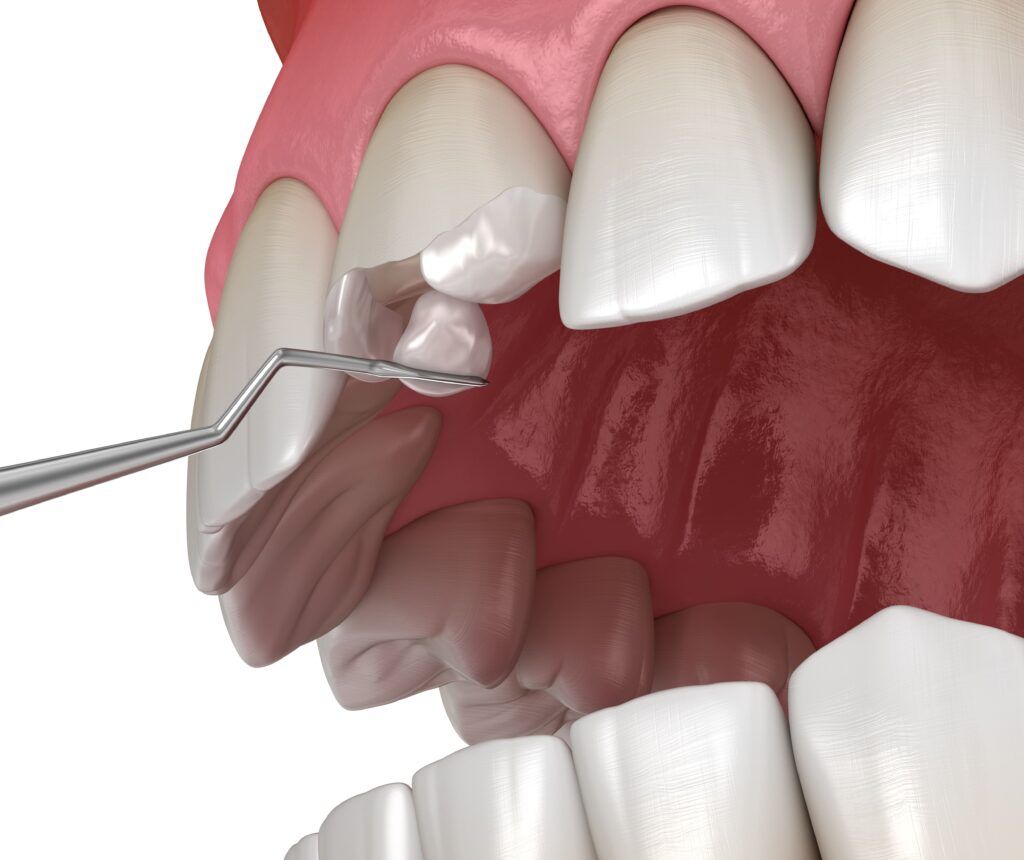
Cosmetic bonding is another popular cosmetic dental procedure that can be used to improve the appearance of your smile. The treatment involves using a tooth-colored resin to repair chipped, cracked, or discolored teeth. Cosmetic bonding can also be used to close gaps between teeth and change the shape or size of teeth.
Cosmetic bonding is a quick, easy, and affordable way to improve the appearance of your smile. The procedure can be completed in one office visit and does not require any anesthesia. Unlike veneers or crowns, cosmetic bonding does not require any alteration to your natural teeth.
Although cosmetic bonding can be performed on its own, it is often used in conjunction with other cosmetic dental procedures, such as teeth whitening. When used together, these procedures can offer dramatic results.
If you are considering a smile makeover with both teeth whitening and cosmetic bonding, it is important to have your teeth whitened first. Teeth whitening will remove any existing stains or discoloration from your teeth. This will ensure that your bonding resin is the same color as your natural teeth.
If you have your cosmetic bonding done first, any staining or discoloration that occurs after the procedure will be visible and can make your bonding material stand out. By having your teeth whitened first, you can avoid this issue and achieve a more natural-looking result.
If you are considering a smile makeover and have questions about which treatment is right for you, contact our office today to schedule a consultation with our experienced cosmetic dentist. Dr. Sadati will work with you to create a personalized treatment plan that meets your unique needs and goals.

Dr. Sadati possesses extensive experience in all aspects of advanced restorative dentistry, with an emphasis in cosmetic and implant dentistry. He has attained Accredited Fellow status in the American Academy of Cosmetic Dentistry (AACD), the most rigorous, demanding credentialing process in the world. He is the only AACD Accredited Fellow in South Florida.
Did you know that the best way to floss is to floss correctly? Flossing is an essential component of oral health, but it might be tough to know how to do it correctly. In this blog post, we will describe the best way to floss your teeth. First, we will explain the importance of flossing and how it benefits oral health. Then, we will provide a step-by-step explanation on how to properly floss. Finally, we will list additional flossing tips to help improve your flossing routine.
…that is the question. Ask any dental professional and the answer is a resounding “to floss!” Flossing helps remove plaque and bacteria from teeth and gums that brushing alone cannot reach. Plaque is a sticky film of food debris, bacteria, and saliva. When plaque is not removed, it hardens into tartar (calculus). This can happen 48 hours after plaque first forms on the surface of the teeth. Not only is tartar unsightly and unable to be removed by a toothbrush, it can also contribute to gum disease and tooth decay. This is why it is necessary to floss daily to ensure that as much plaque is removed as possible.
The first step in flossing correctly is to choose the right type of floss for your needs. There are many different types of floss on the market, so be sure to ask your dentist or hygienist for a recommendation. Once you have the right type of floss, you can move on to the next step.
The second step is to cut off a piece of floss that is about 18 inches long. This will give you enough floss to work with and will help avoid waste.

Once you have your piece of floss, the third step is to wind the extra floss around your middle fingers. Then, use your thumbs and index fingers to hold the floss so that you have about two inches of floss to work with.
The fourth step is to hold the floss tightly between your thumbs and index fingers and gently work it in between two teeth. Then, slide the floss up and down against each tooth, taking care not to smack the gums. When you reach the gums, you will then want to curve the floss into a C shape so that it can move into the space between the tooth and gums.
The fifth and final step is to repeat this process, being sure to use a clean section of floss for each tooth. This will help ensure that you are not re-introducing plaque and bacteria into your mouth. Also, don’t forget to floss behind your back teeth!
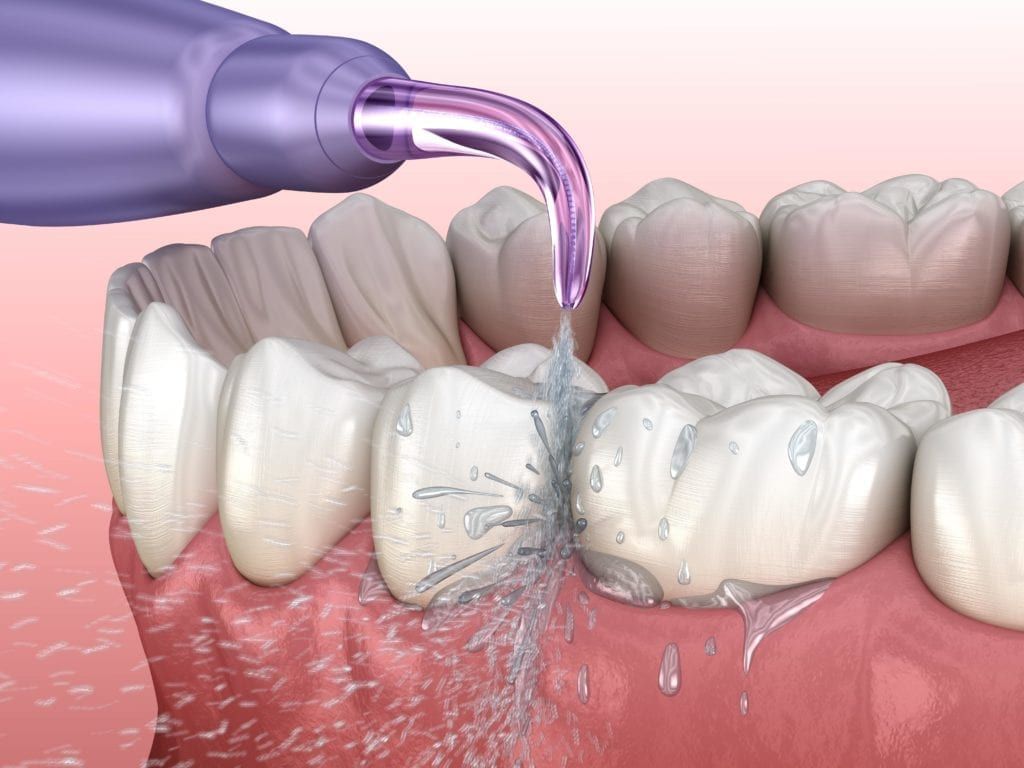
Flossing correctly is an important part of oral health. By following the steps above, you can be sure that you are doing everything possible to keep your teeth and gums healthy. In addition, be sure to visit your dentist or hygienist regularly for professional cleanings and check-ups. They will be able to give you additional tips on how to improve your oral health routine.
Happy flossing!

Dr. Sadati possesses extensive experience in all aspects of advanced restorative dentistry, with an emphasis in cosmetic and implant dentistry. He has attained Accredited Fellow status in the American Academy of Cosmetic Dentistry (AACD), the most rigorous, demanding credentialing process in the world. He is the only AACD Accredited Fellow in South Florida.
Dental sedation has become a popular option for people who are fearful of the dentist. It can help to calm patients and make their dental visit more comfortable. But is sedation dentistry safe? In this blog post, we will discuss the different types of dental sedation and how they are administered. We will also talk about how sedation affects the body and what to expect when under sedation. Finally, we will talk about who is an ideal candidate for dental sedation and who may be at an increased risk of complications. We will list specific conditions where dental sedation is not recommended.
Oral sedation is taken by pill form an hour before the appointment. The pill will make you drowsy but you will still be awake during your appointment.
Inhaled sedation, also known as nitrous oxide or laughing gas, is a gas that you will breathe in through a small mask during your appointment. It will make you feel relaxed but you will still be awake during your procedure.

Dental sedation affects the body by causing drowsiness and relaxation. There are different levels of sedation that can affect your body differently:
Minimal Sedation – You will be awake and responsive but relaxed.
Moderate Sedation – You will be awake and drowsy, however you may slur your words and not remember the procedure.
Deep Sedation – You will be on the verge of passing out, may fall into a light sleep, and will not remember the procedure.
After undergoing dental sedation, you may not be able to drive yourself home after your appointment. You will need someone to drive you home and stay with you for at least 24 hours after your procedure. Sedation can cause memory loss, so you may not remember much of your appointment. You may also have trouble speaking and moving during your procedure.
Ideal candidates for dental sedation are people who have a fear of the dentist, a sensitive gag reflex, or who need to have a lengthy or complex procedure done. People with heart conditions, lung disease, or severe allergies are at an increased risk of complications and are not ideal candidates for dental sedation.
Yes, sedation dentistry is safe when administered by a licensed dentist. The level of sedation will be determined by the dentist based on your medical history and the procedure that you are having done. Dental sedation is a safe and effective way to make your dental appointment more comfortable. Talk to your dentist about whether sedation dentistry is right for you.
In this blog, we discussed the different types of dental sedation and how they are administered. We also talked about how sedation affects the body and what to expect when under sedation. Finally, we talked about who is an ideal candidate for dental sedation and who may be at an increased risk of complications. As you can see, dental sedation is a safe and effective way to make your dental appointment more comfortable. Talk to your dentist about whether sedation dentistry is right for you.

Dr. Sadati possesses extensive experience in all aspects of advanced restorative dentistry, with an emphasis in cosmetic and implant dentistry. He has attained Accredited Fellow status in the American Academy of Cosmetic Dentistry (AACD), the most rigorous, demanding credentialing process in the world. He is the only AACD Accredited Fellow in South Florida.
If you’re missing a tooth, you may be considering getting a prosthetic tooth. Prosthetic teeth come in many different shapes and sizes, and can be made from a variety of materials. In this blog post, we will describe the steps involved in making a prosthetic tooth, from taking impressions to fitting the tooth in your mouth. We’ll also discuss the different types of prosthetics and materials that can be used to make a prosthetic tooth.
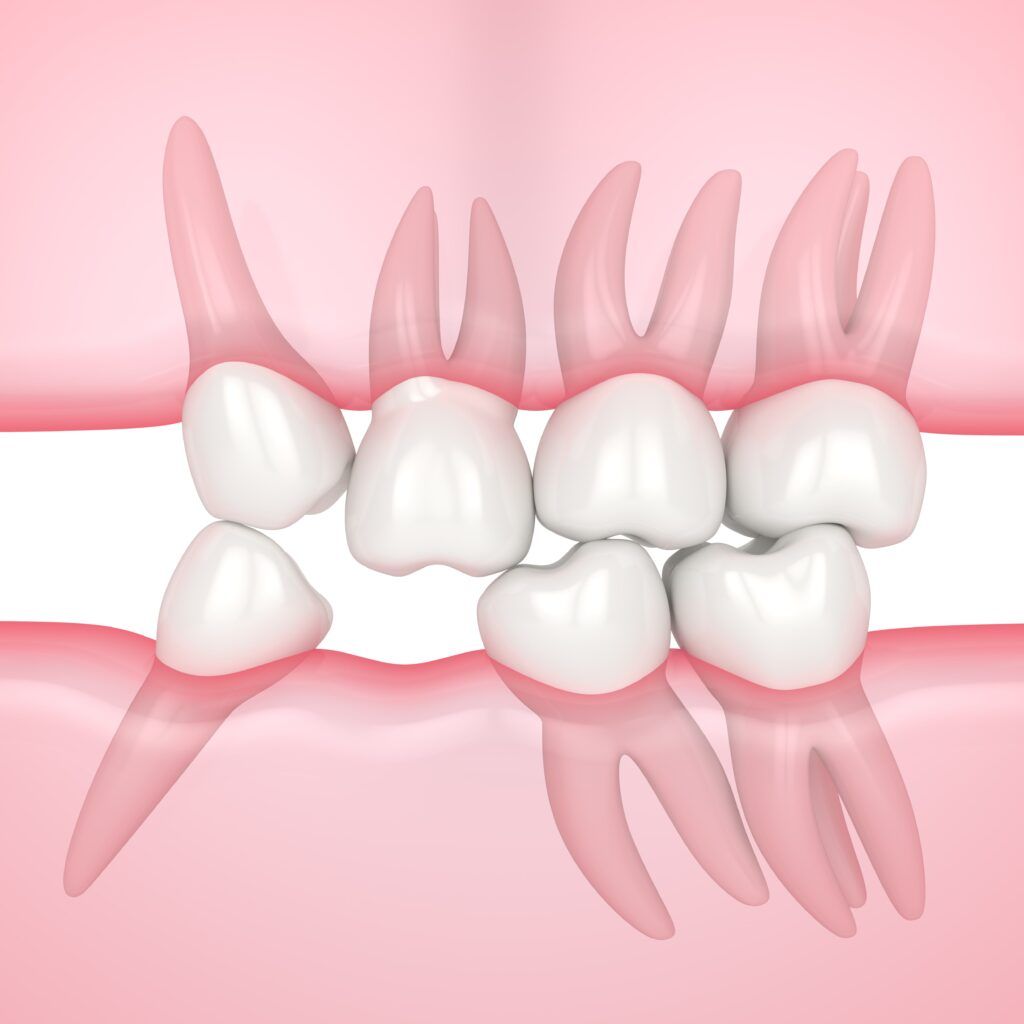
If you’re missing one or more teeth, chances are that your dentist will recommend having a dental prosthetic placed. It is important to replace missing teeth with a prosthetic in order to avoid future complications such as problems eating and speaking, overgrowth, bite problems, shifting teeth, and damaged teeth.
There are many different types of prosthetics available, and the type that is right for you will depend on the number of teeth you are missing, your budget, and your personal preferences.
A dental bridge is used to replace one or more missing teeth. The bridge is made up of two crowns (caps) that are placed over the adjacent teeth, and one or more false teeth (pontics) in between. The pontics are usually made from porcelain or ceramic.
A dental implant is a metal post that is placed into the jawbone to serve as a tooth root replacement. A dental prosthetic (crown, bridge, or denture) is then attached to the metal post. Dental implants are considered to be the most stable and durable type of prosthetic.
Dentures are used to replace all of the teeth in the upper or lower jaw. They are made up of false teeth (pontics) that are attached to a pink-colored base that resembles gum tissue. The base is then held in place by suction or adhesive. Complete dentures can be made from a variety of materials, including porcelain, plastic, or metal.
If you’re missing a tooth, the first step is to schedule an appointment with your dentist. During this appointment, your dentist will take impressions of your teeth. These impressions will be used to make a model of your mouth, which will be used to create your prosthetic tooth.
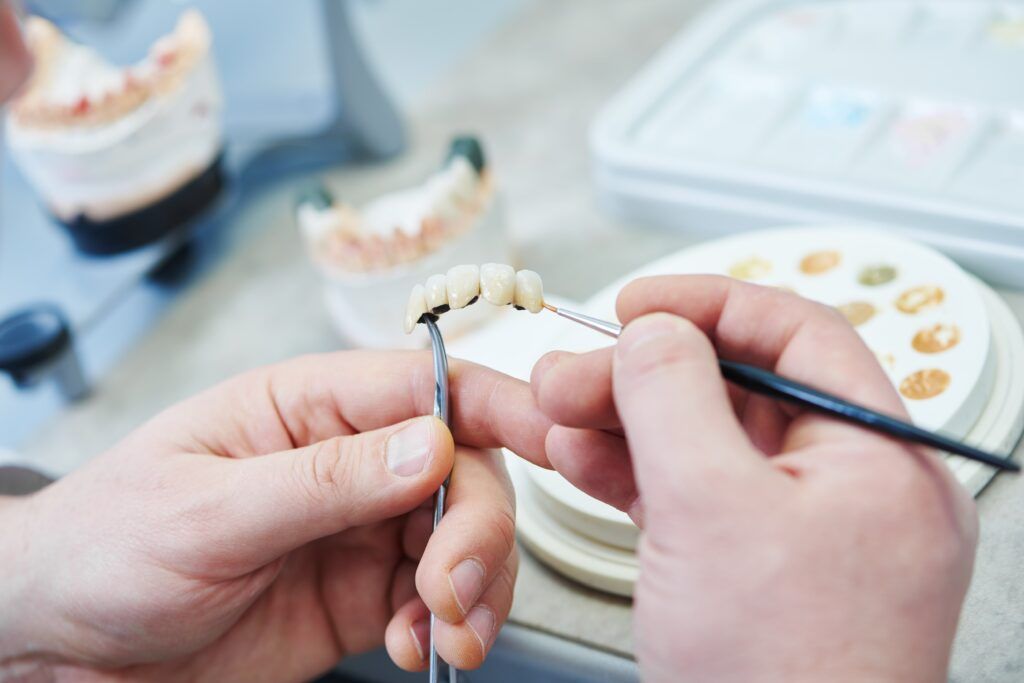
Once the model of your mouth is created, your dentist will select the materials that will be used to make your prosthetic tooth. There are many different types of materials that can be used, including porcelain, composite resin, and acrylic. Your dentist will select the material that is best suited for your individual needs.
Once the material is selected, a dental lab will create the prosthetic tooth. This process will vary depending on the type of material that is used. After the prosthetic tooth is created, it will be fitted into your mouth. Your dentist will make any necessary adjustments to ensure a comfortable and secure fit.
If you’re considering getting a prosthetic tooth, we hope this blog post has been helpful. If you have any questions, we encourage you to schedule an appointment with your dentist. They will be able to answer any questions you may have and help you decide if a prosthetic tooth is right for you. Thanks for reading!

Dr. Sadati possesses extensive experience in all aspects of advanced restorative dentistry, with an emphasis in cosmetic and implant dentistry. He has attained Accredited Fellow status in the American Academy of Cosmetic Dentistry (AACD), the most rigorous, demanding credentialing process in the world. He is the only AACD Accredited Fellow in South Florida.